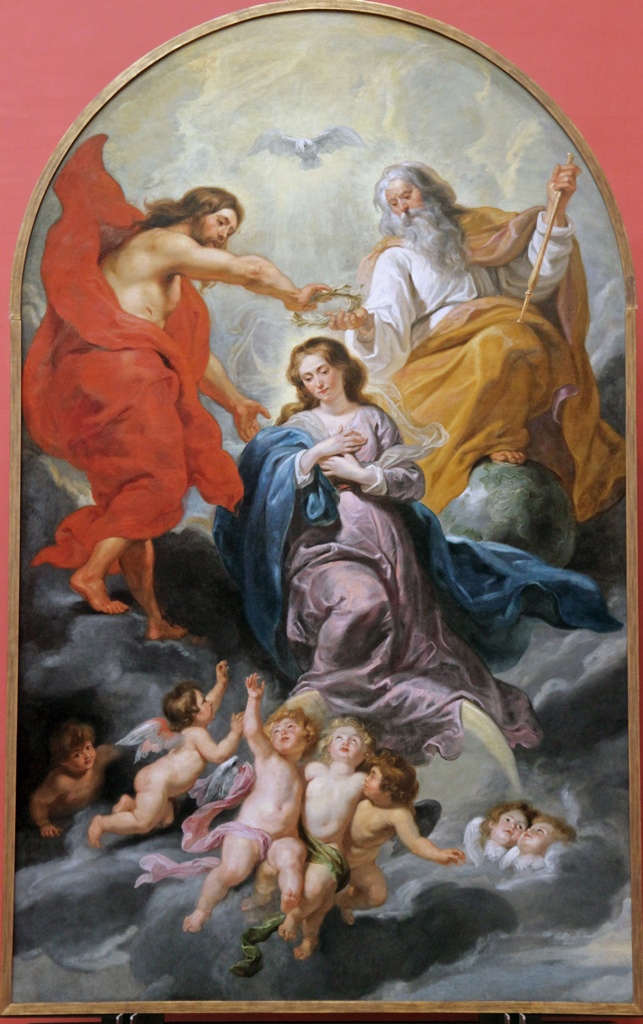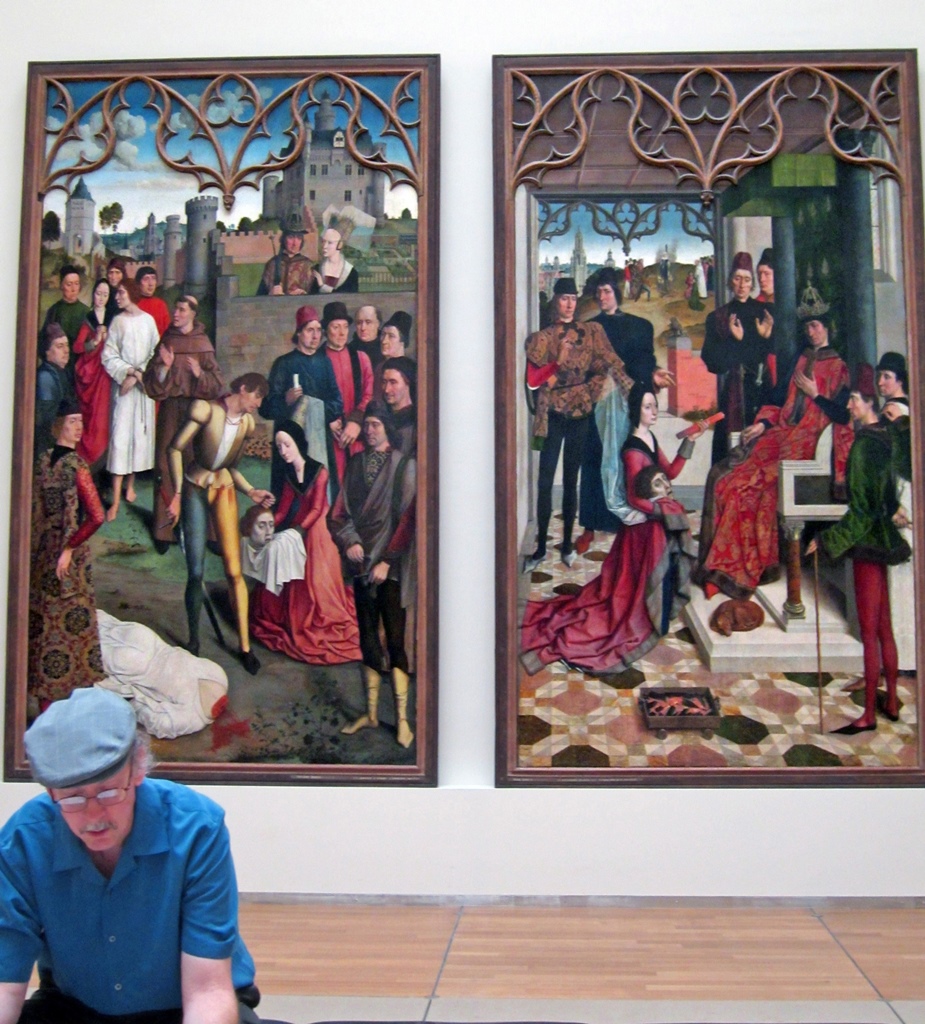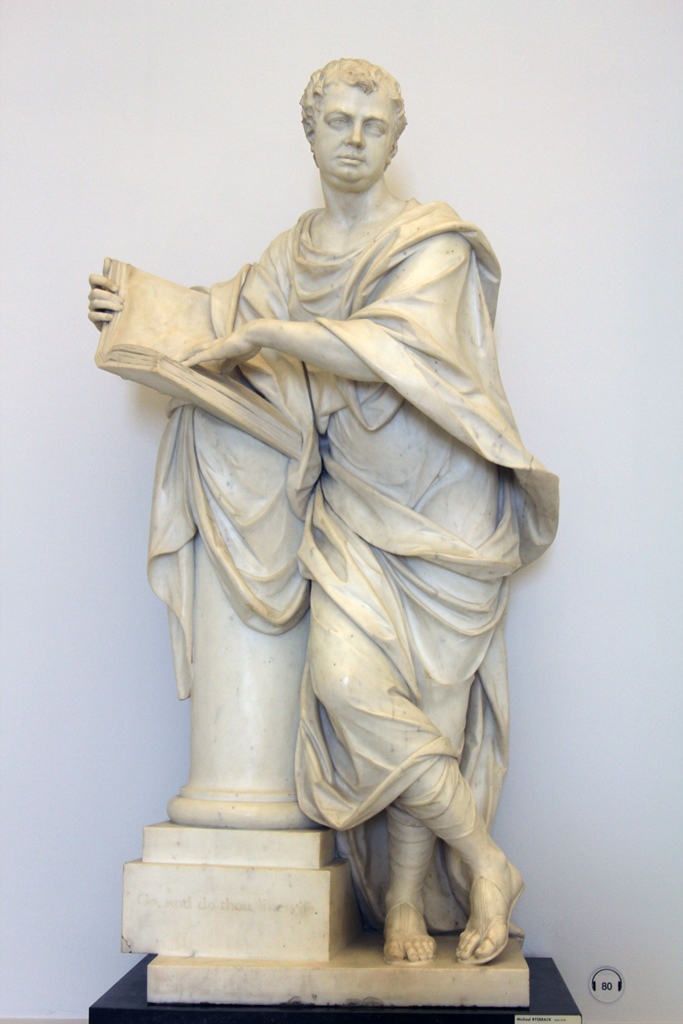The Royal Museums of Fine Arts
is a collection of six Brussels museums, of which we only actually visited one. At
the time of our visit there were only four museums in this group, and before 1927
there was just one. This museum was established in 1801 by a decree from French
First Consul Napoleon Bonaparte, with the museum’s doors first opening to the
public in 1803. The museum was owned by the city of Brussels until 1842, when it
was transferred to the state. Additional artworks were acquired over the years,
with the older artworks (mainly pre-19th Century) eventually being split off into
their own museum, the Museum of Ancient Art. This is the museum we visited. It
now has the redundant name of
Musée Oldmasters Museum and
has quite a large collection. There is art from throughout Europe, but the
emphasis, as one would expect, is on paintings produced in the area of
present-day Belgium and the Netherlands.
We trudged back up the Coudenberg hill to where the Oldmasters Museum was
located (along with a Modern Art museum and a museum devoted to Belgian
surrealist Rene Magritte) and paid our admission fee. Normally there’s a direct
connection between the Oldmasters Museum and the Modern Art museum, but the
Modern Art museum was being renovated at the time of our visit, so that option
was not available to us.
As we’d seen in numerous other museums, the earliest paintings in the Oldmasters
Museum collection focused exclusively on Biblical themes. With certain episodes
being more popular than others among artists (or sponsors), there was a fair
amount of repetition in the themes, though there were a variety of
interpretations. Some of the works depicted scenes from the Old Testament.
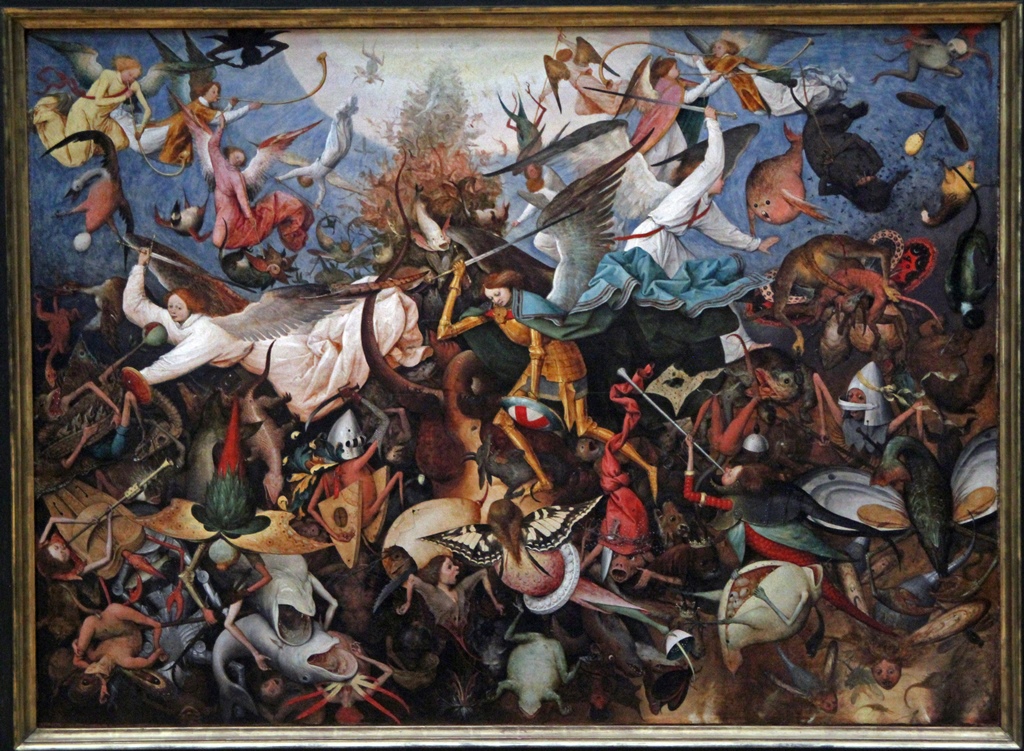
The Fall of the Rebel Angels, Pieter Brueghel the Elder (1562)
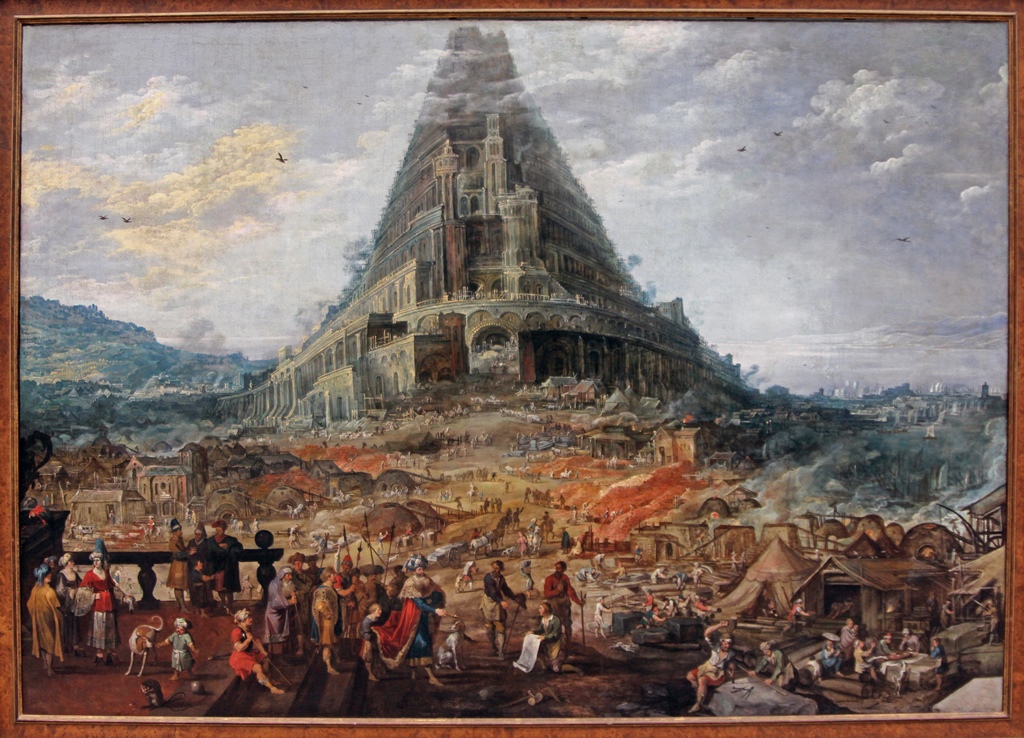
Tower of Babel, Joos de Momper II and Frans Francken II
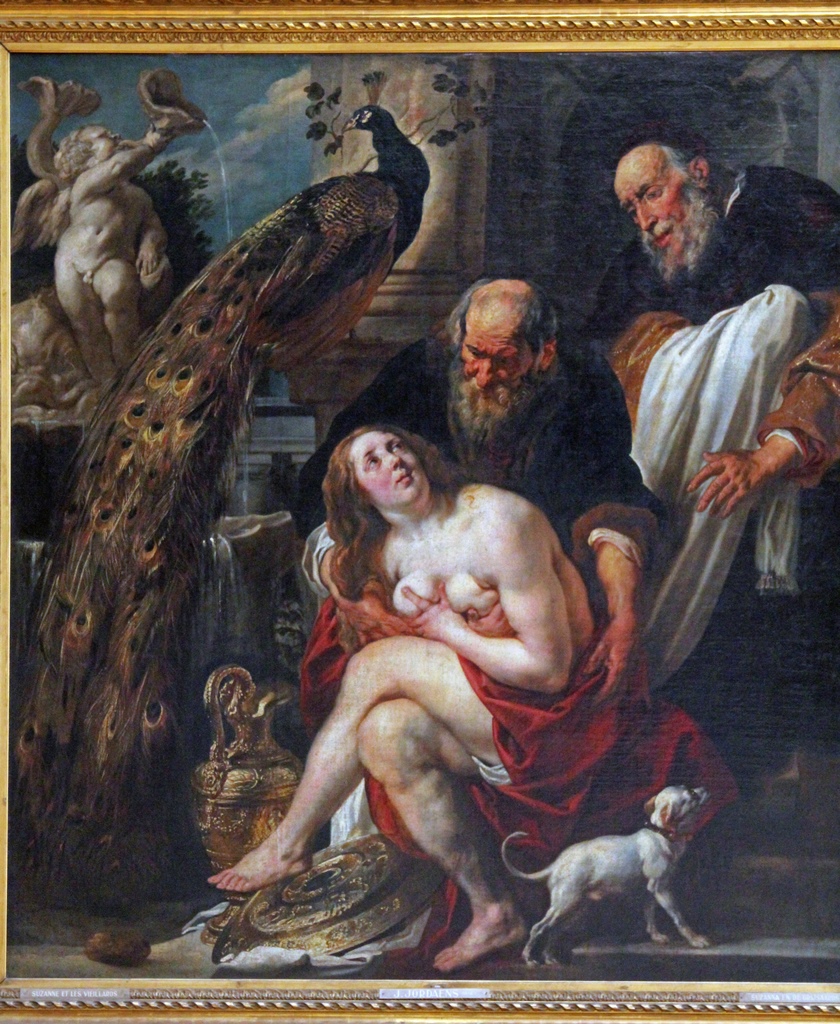
Susanna and the Elders, Jacob Jordaens (17th C.)
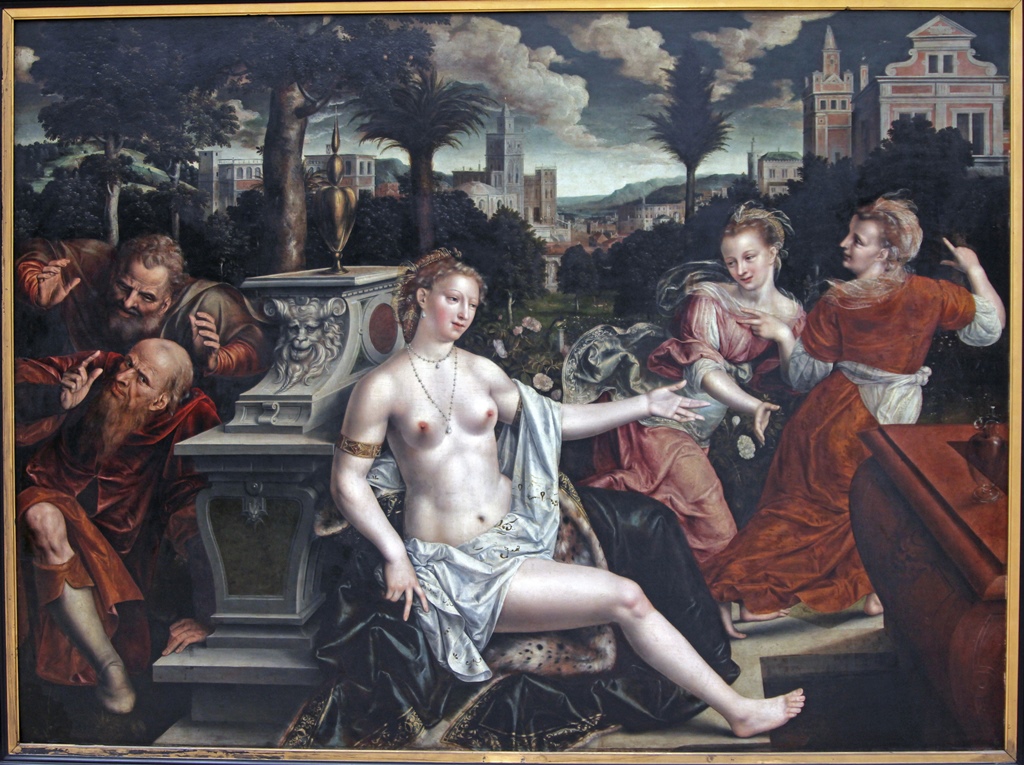
Susanna and the Elders, Jan Massys (1567)
New Testament works seemed to be more plentiful, though.
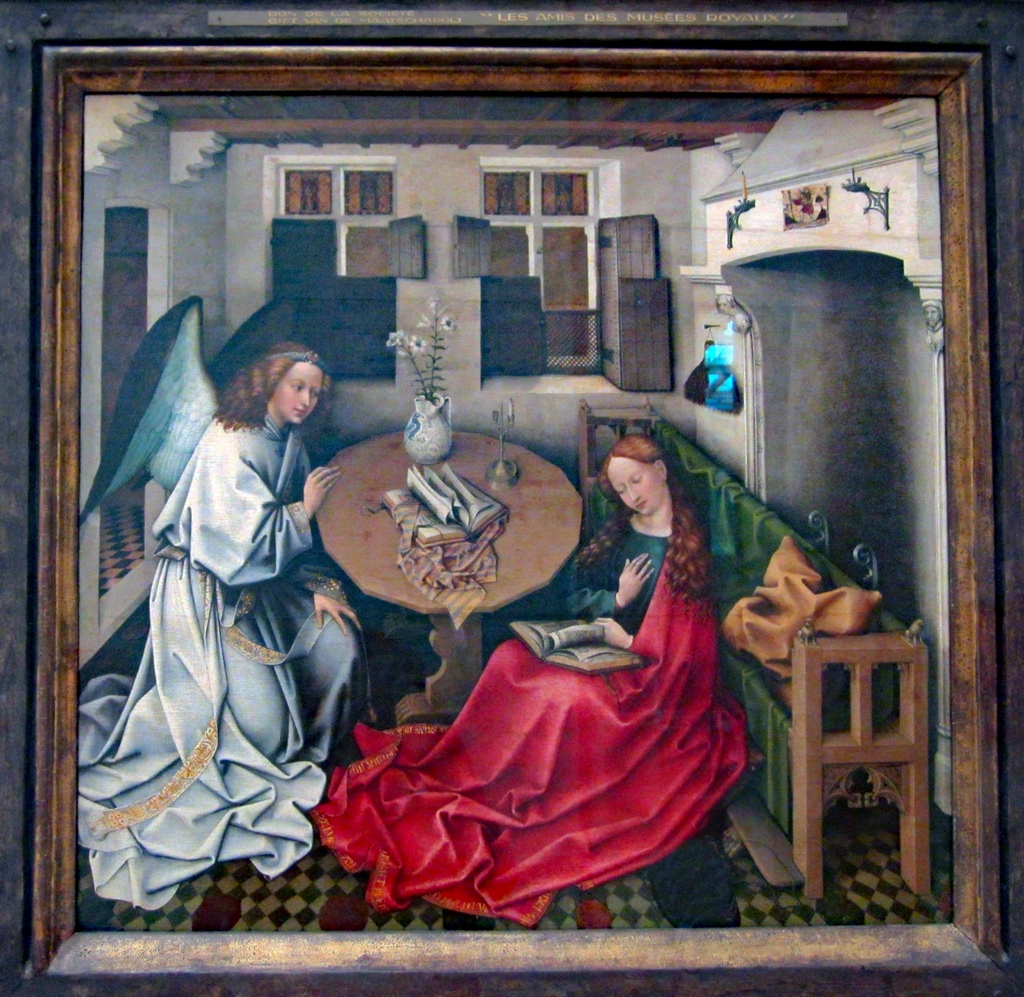
The Annunciation, Master of Flémalle
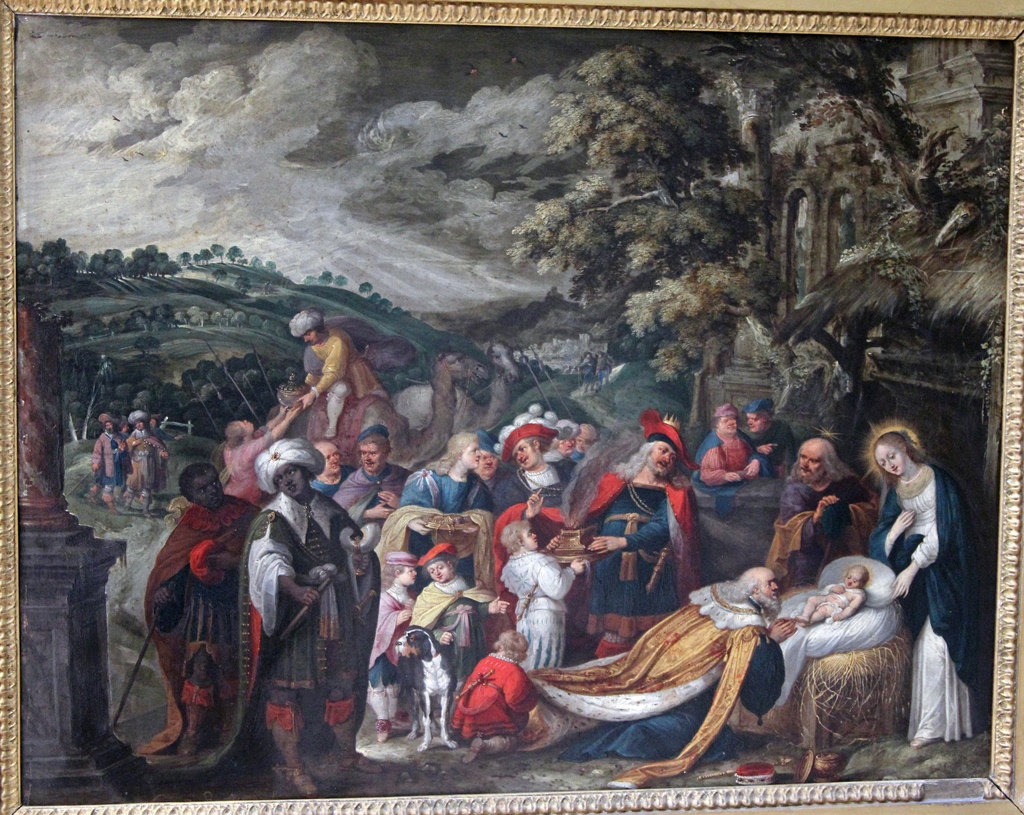
Adoration of the Magi, Cornelis de Baellieur I
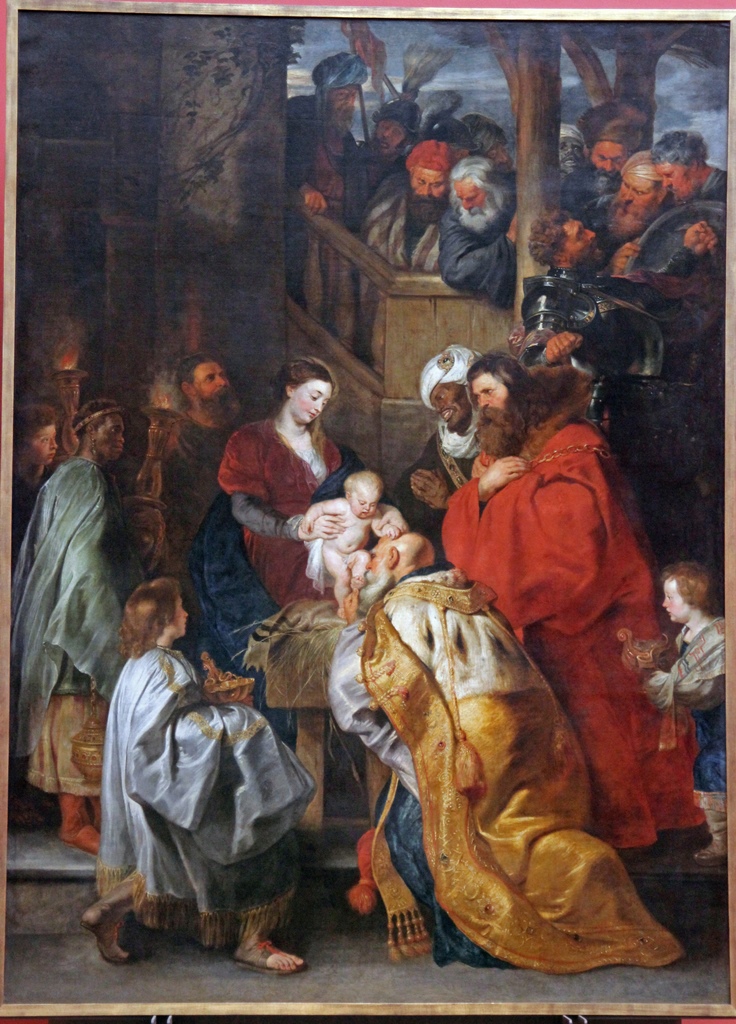
Adoration of the Magi, Peter Paul Rubens
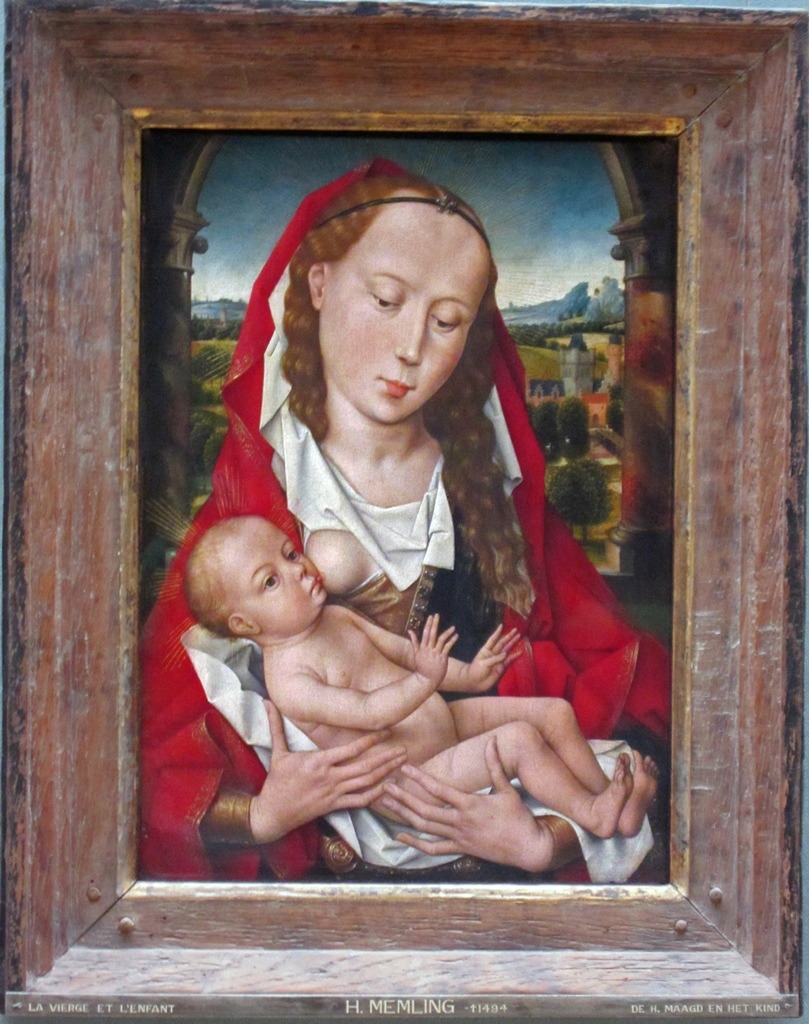
Virgin and Child, Hans Memling (15th C.)
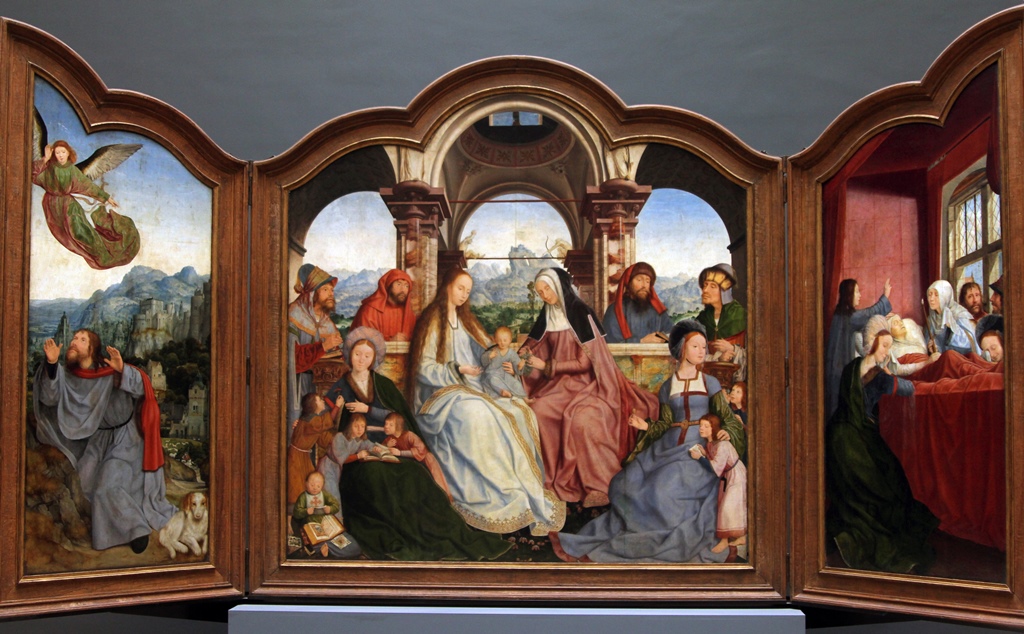
Triptych of the Brotherhood of St. Anne in Leuven, Quinten Metsys (1509)
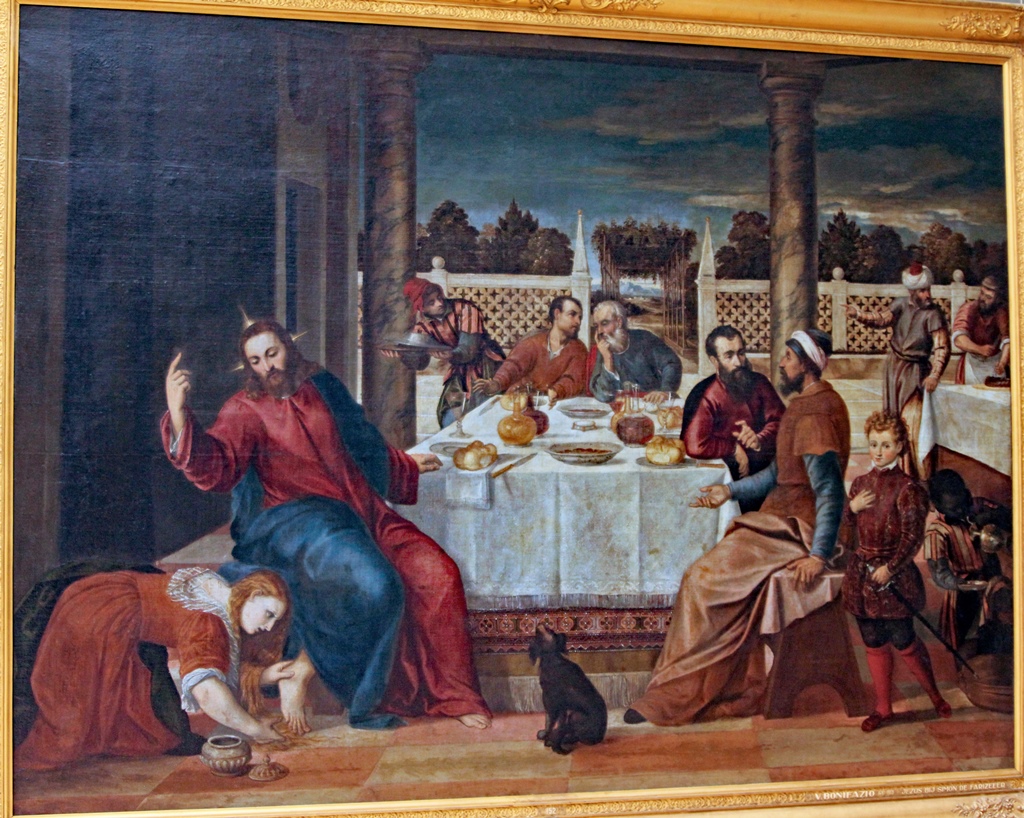
Jesus at the Home of Simon the Pharisee, Bonifazio Veronese
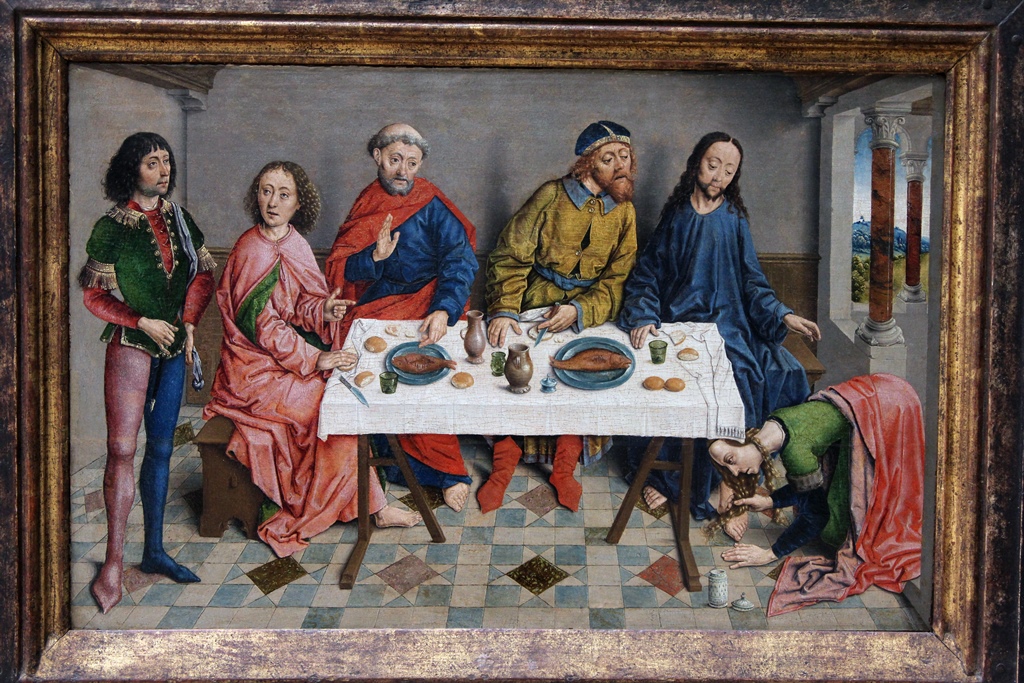
Jesus in the House of Simon the Pharisee, Albrecht Bouts
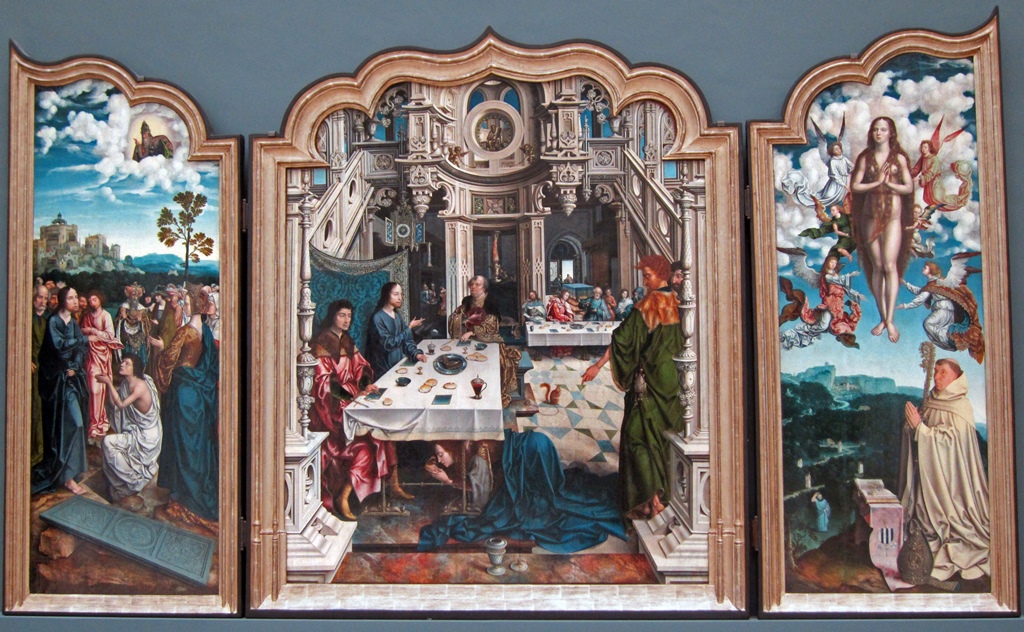
Triptych of the Abbey of Dieleghem, Master of 1518 (1518)
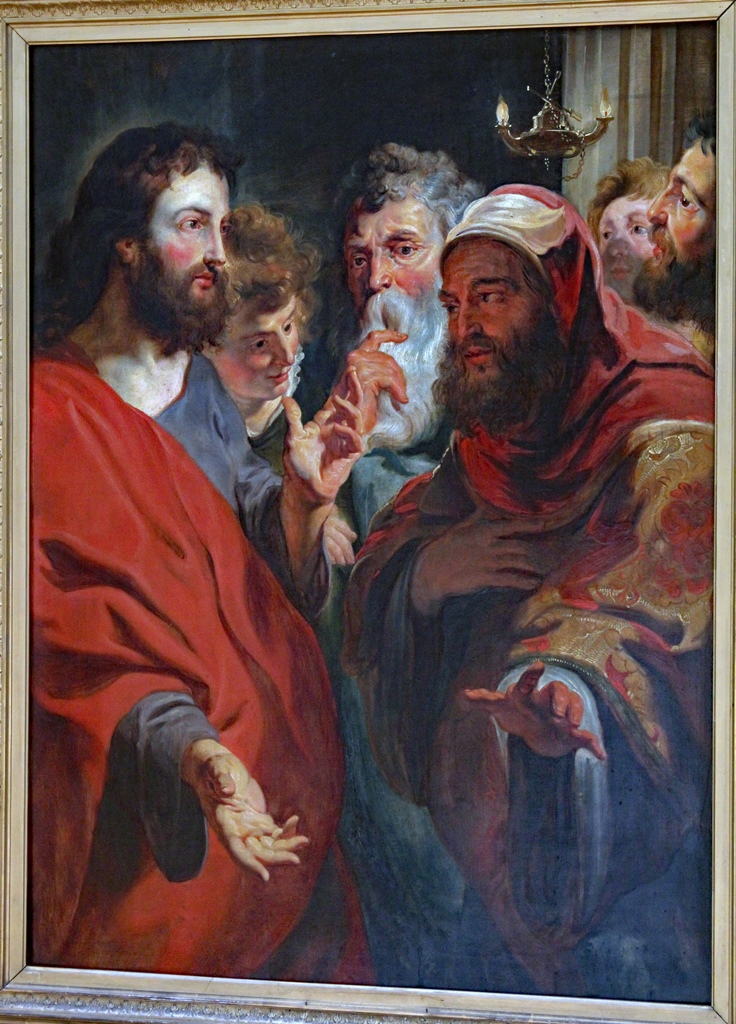
Jesus Instructing Nicodemus, Jacob Jordaens (17th C.)
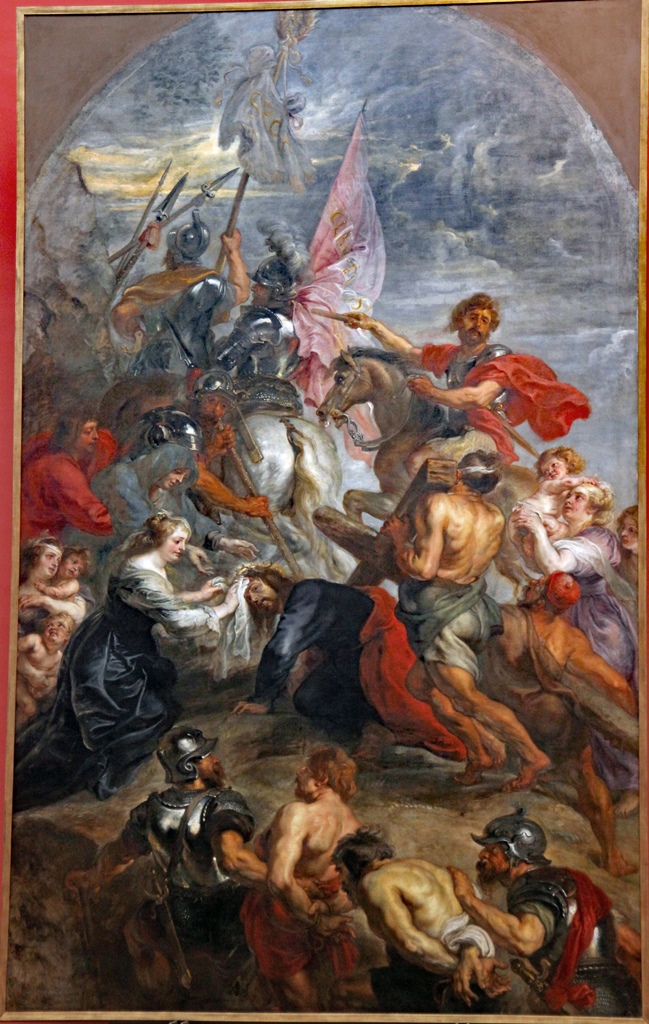
The Road to Calvary, Peter Paul Rubens and Workshop
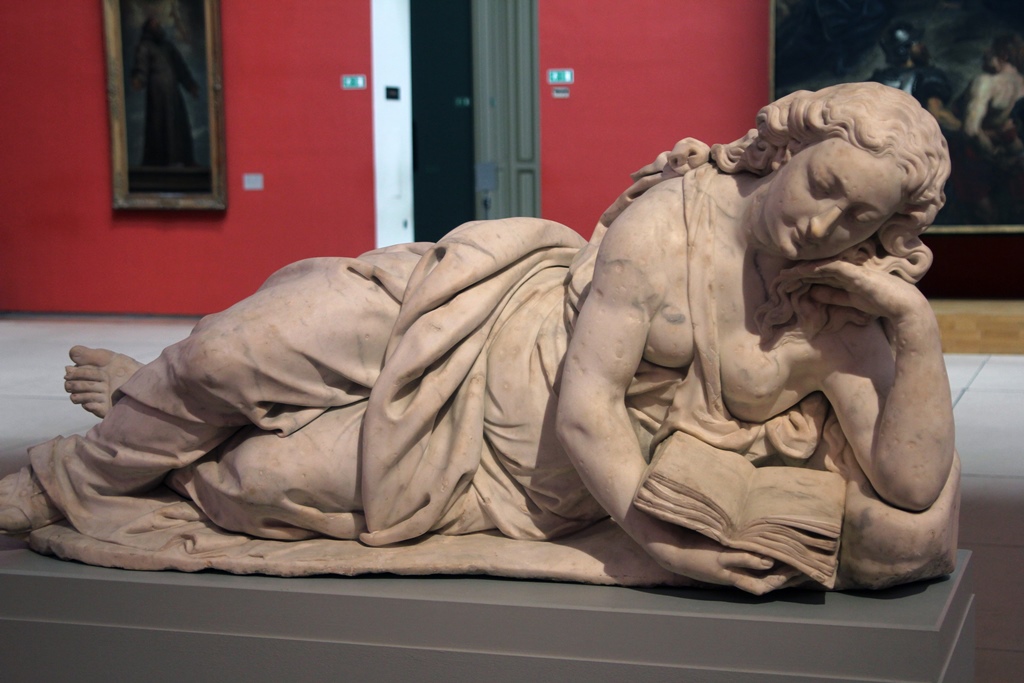
Mary Magdelene Repentant, Hieronymous du Quesnoy I (attr.)
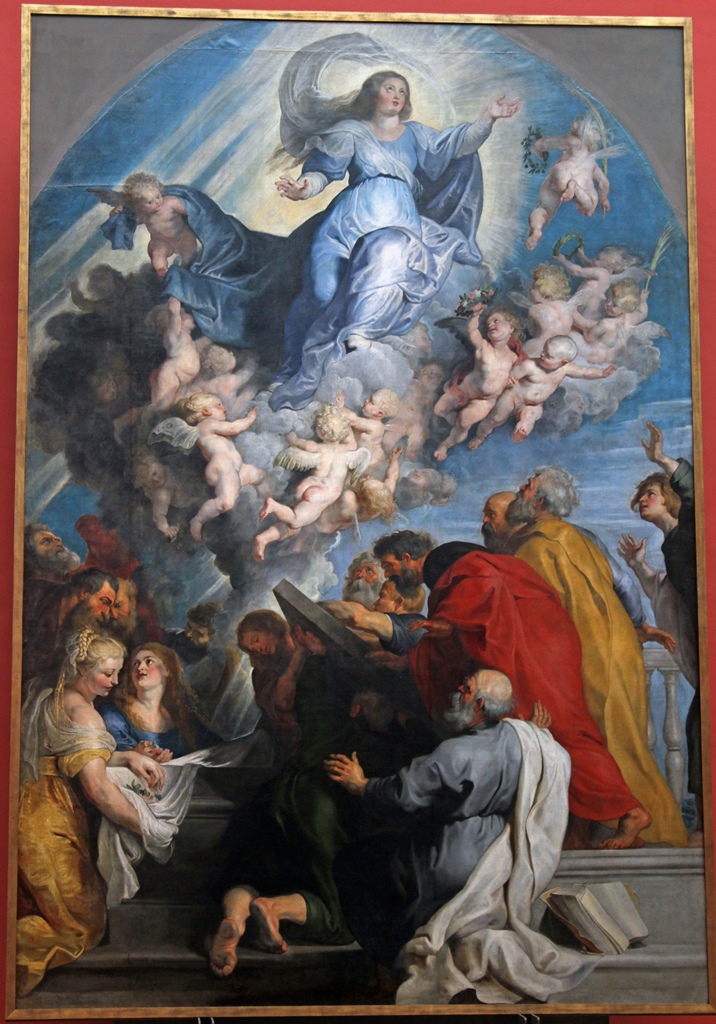
The Assumption of the Virgin, Peter Paul Rubens and Workshop
Coronation of the Virgin, Peter Paul Rubens
Lives and deaths of saints, usually martyred, could be especially dramatic.
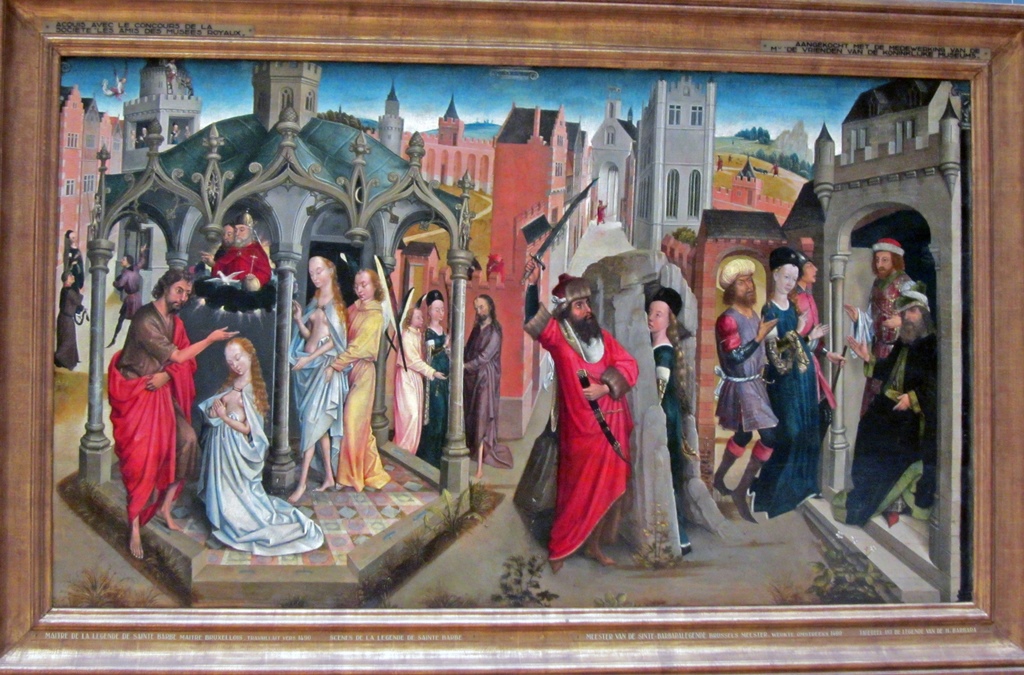
Scenes from the Legend of St. Barbara, Master of the Legend of St. Barbara
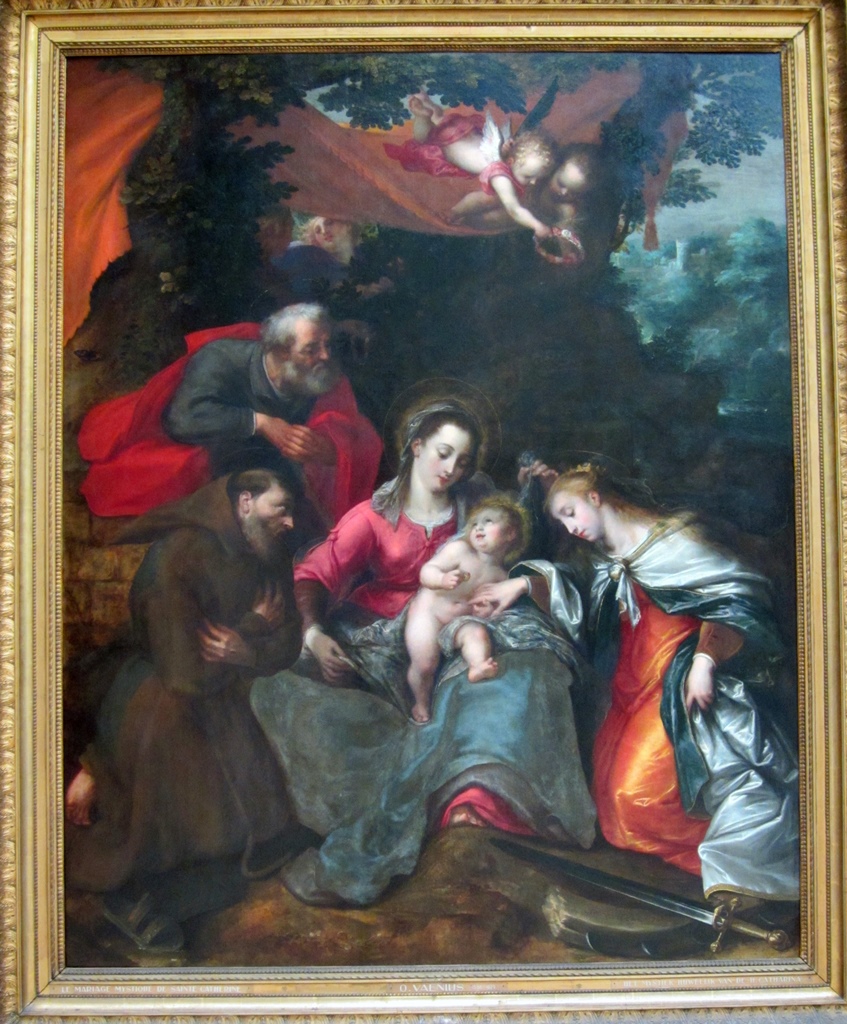
The Mystic Marriage of St. Catherine, Otto Vaenius (1589)
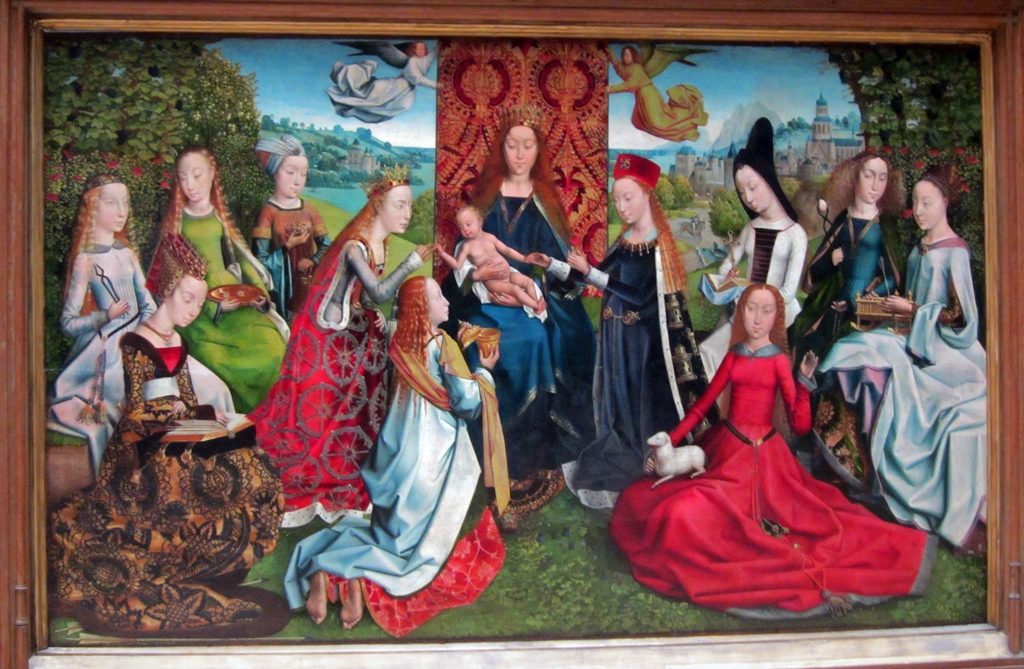
Virgin Among Virgins, Master of the Legend of St. Lucy (15th C.)
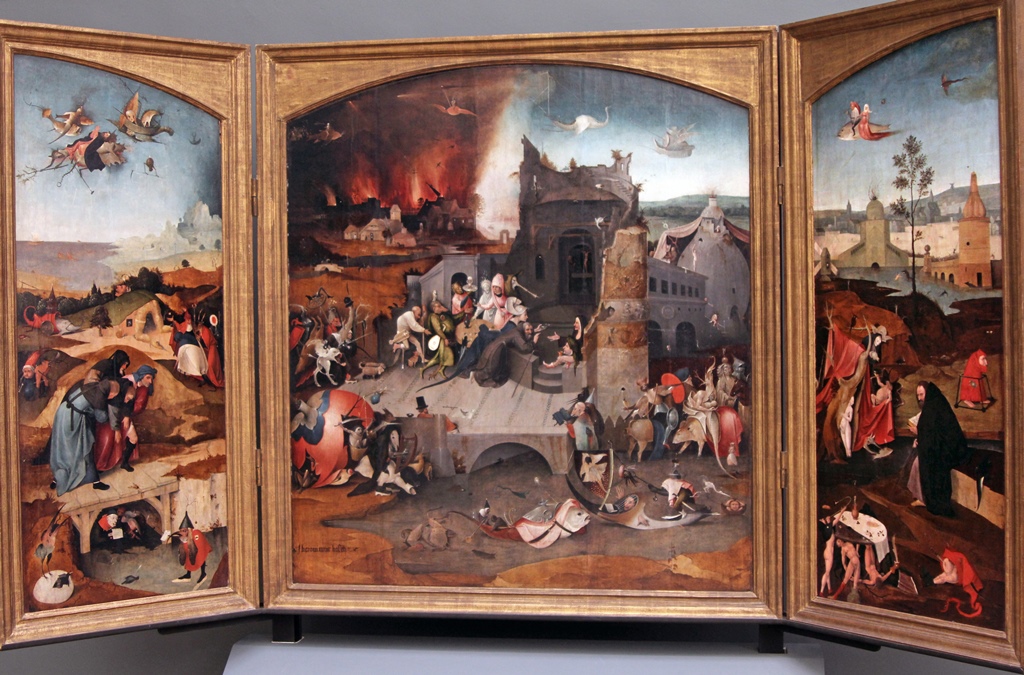
Triptych of the Temptation of St. Anthony, Hieronymus Bosch
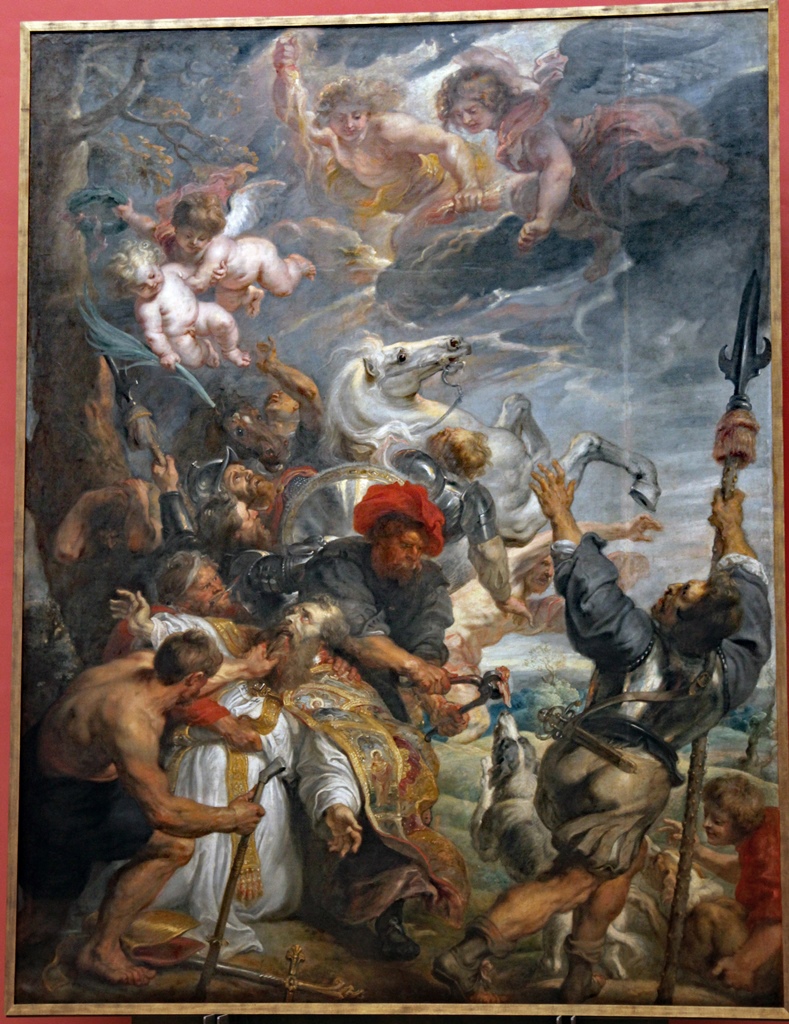
The Martyrdom of St. Livinus, Peter Paul Rubens (1633)
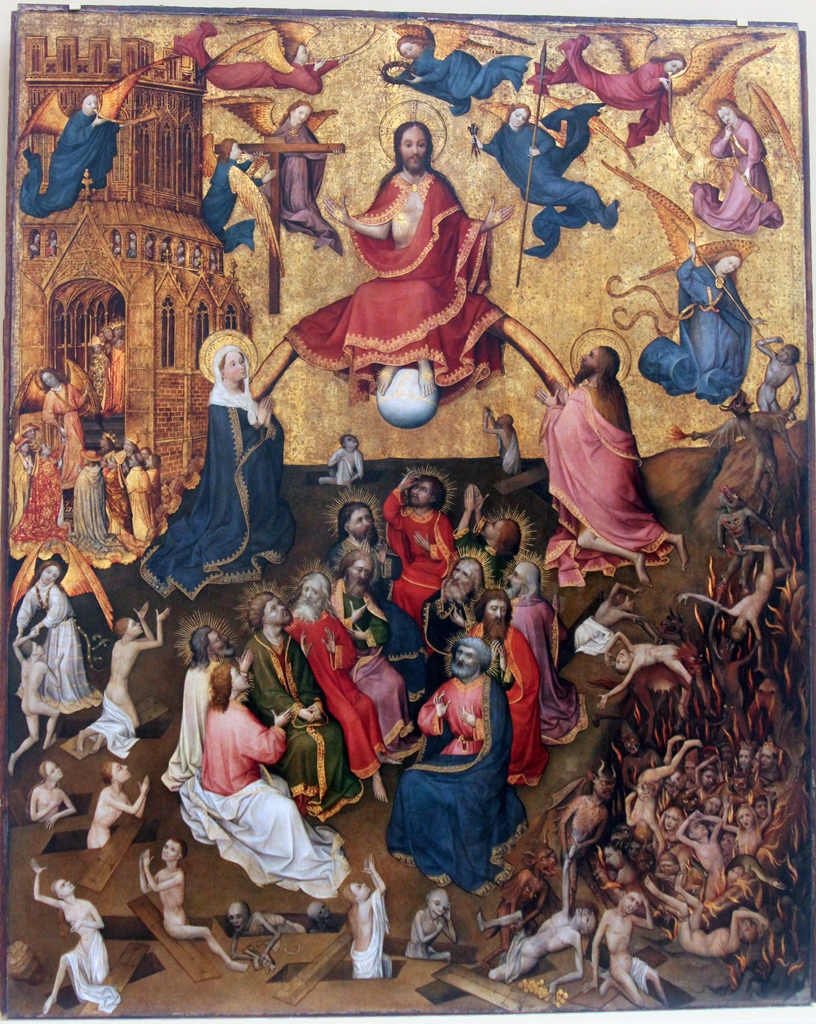
The Last Judgment, School of the South Netherlands (15th C.)
Eventually artists veered off into ancient mythological stories, which had
plenty of (often salacious) drama of their own.
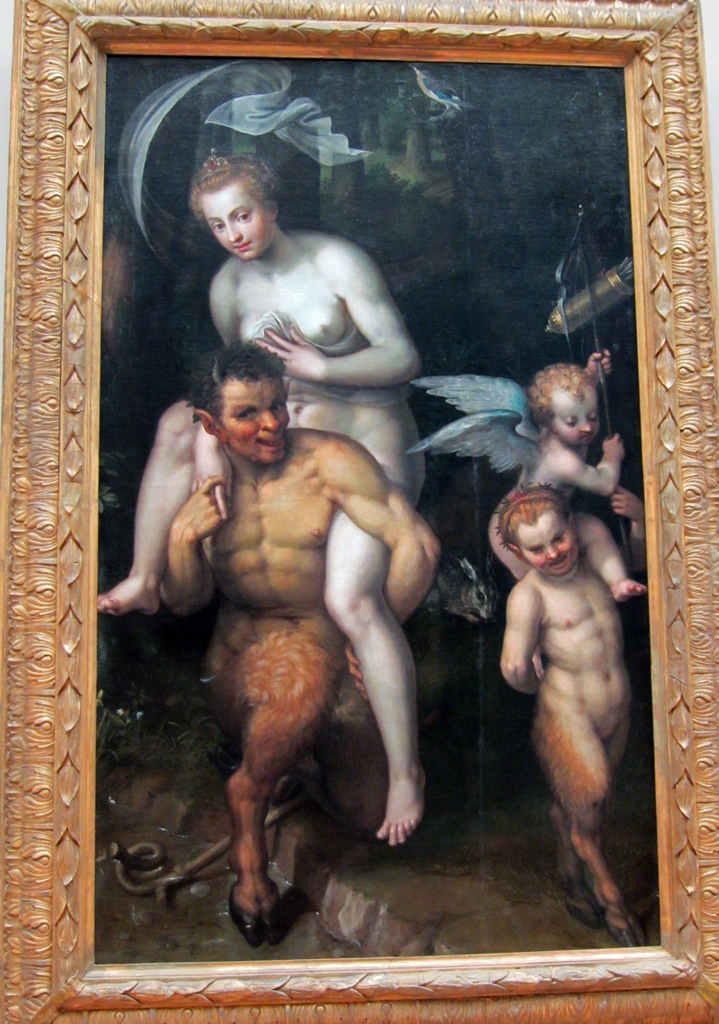
Venus Riding a Satyr, Dirck de Quade van Ravesteyn
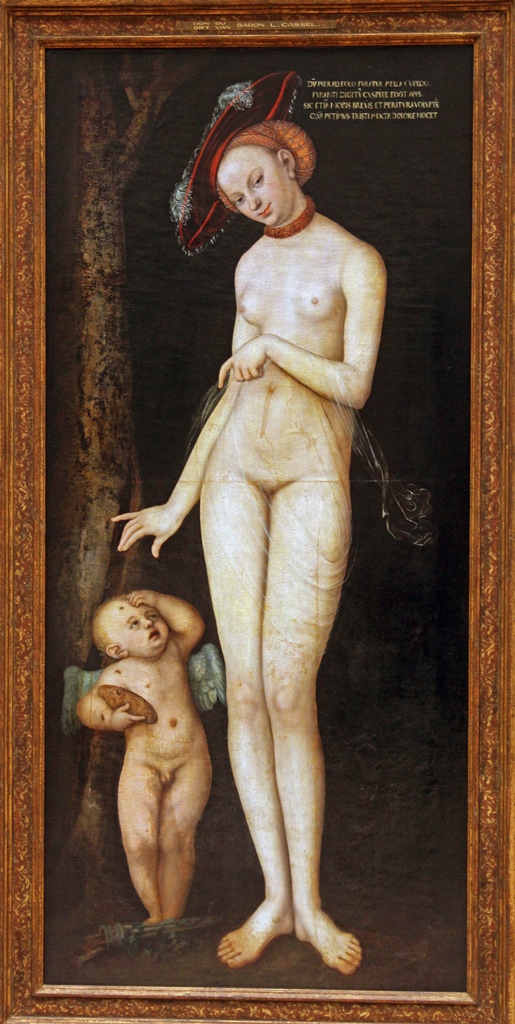
Venus and Cupid, Lucas Cranach the Elder (1531)
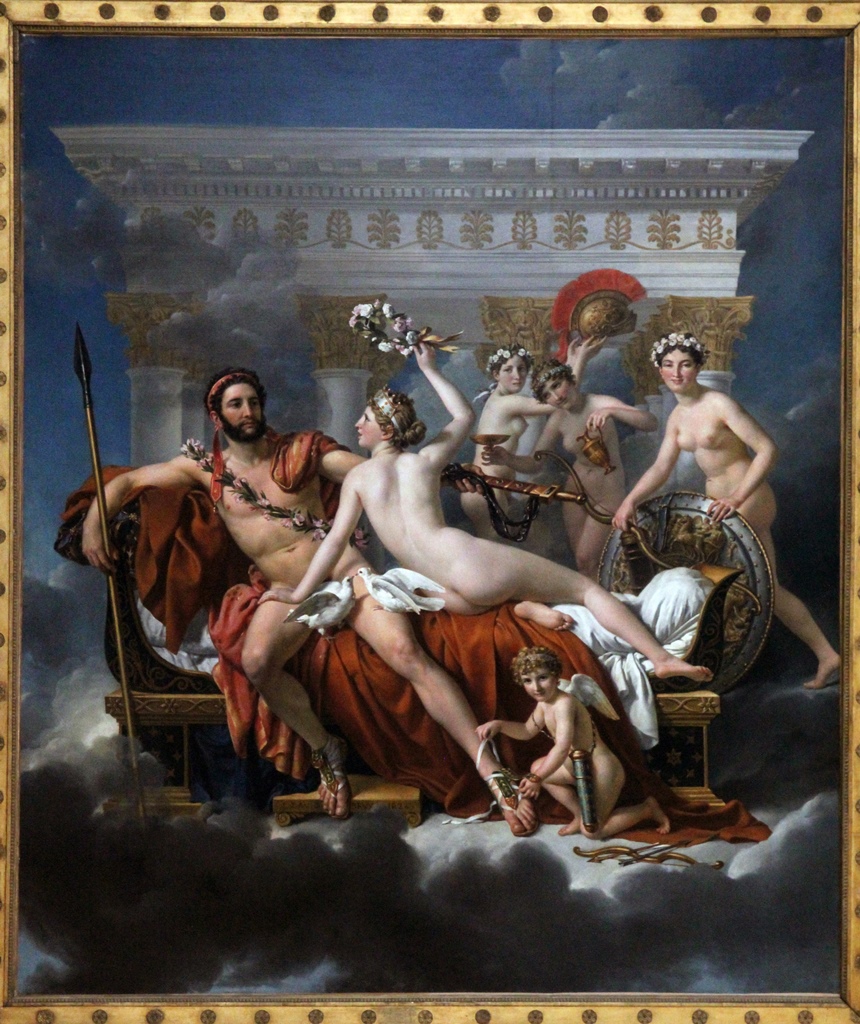
Mars Disarmed by Venus, Jacques-Louis David (1824)
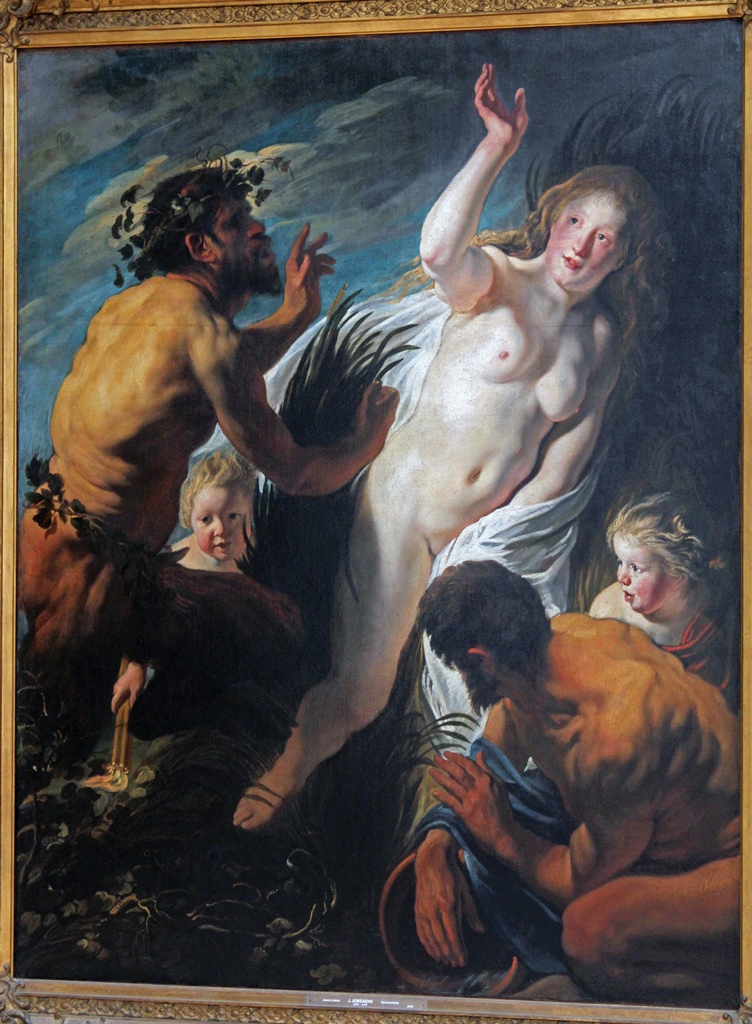
Pan and Syrinx, Jacob Jordaens (17th C.)
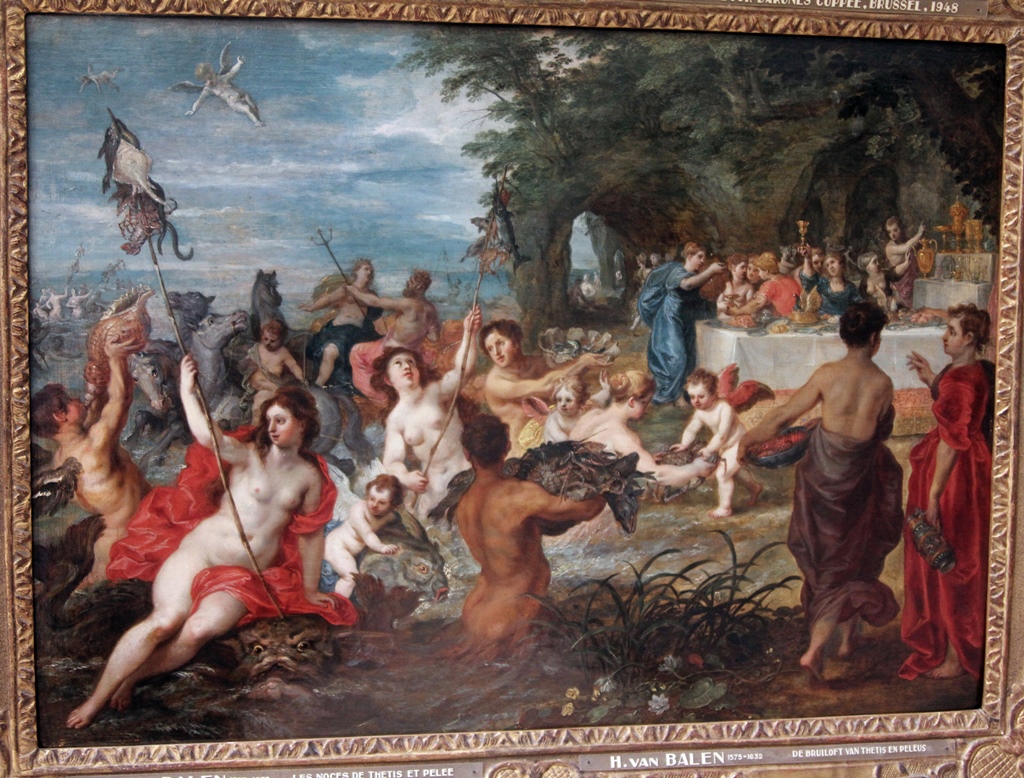
The Wedding of Thetis and Peleus, Hendrick van Balen
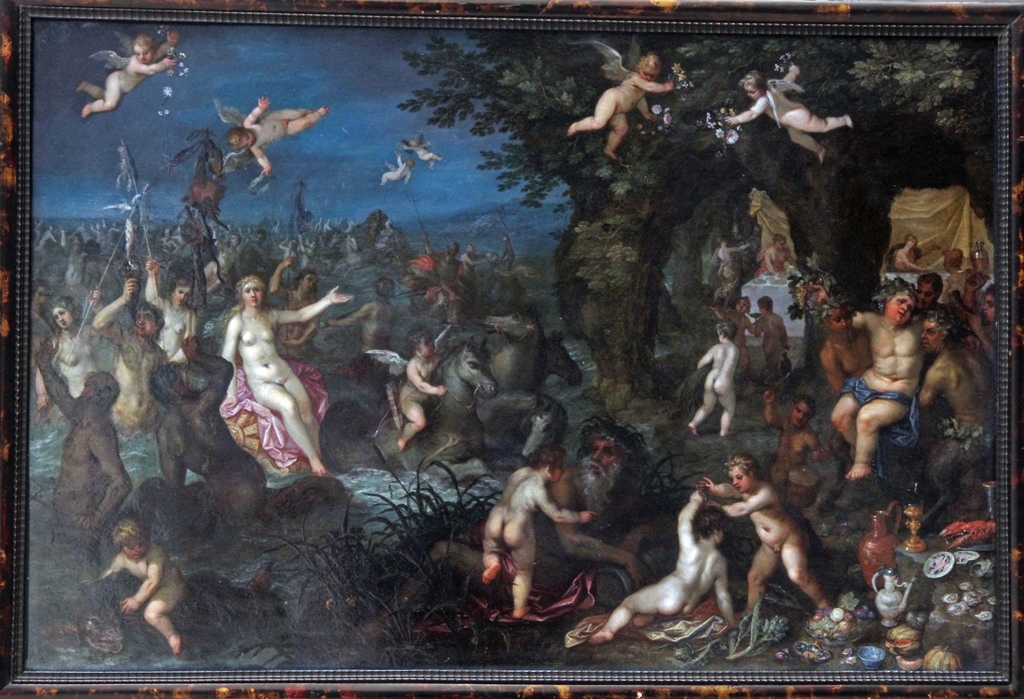
The Marriage of Bacchus and Ariadne, Jan Brueghel I and Hendrick van Balen
Some works were allegorical in nature, inviting viewers to come up with
their own interpretations.
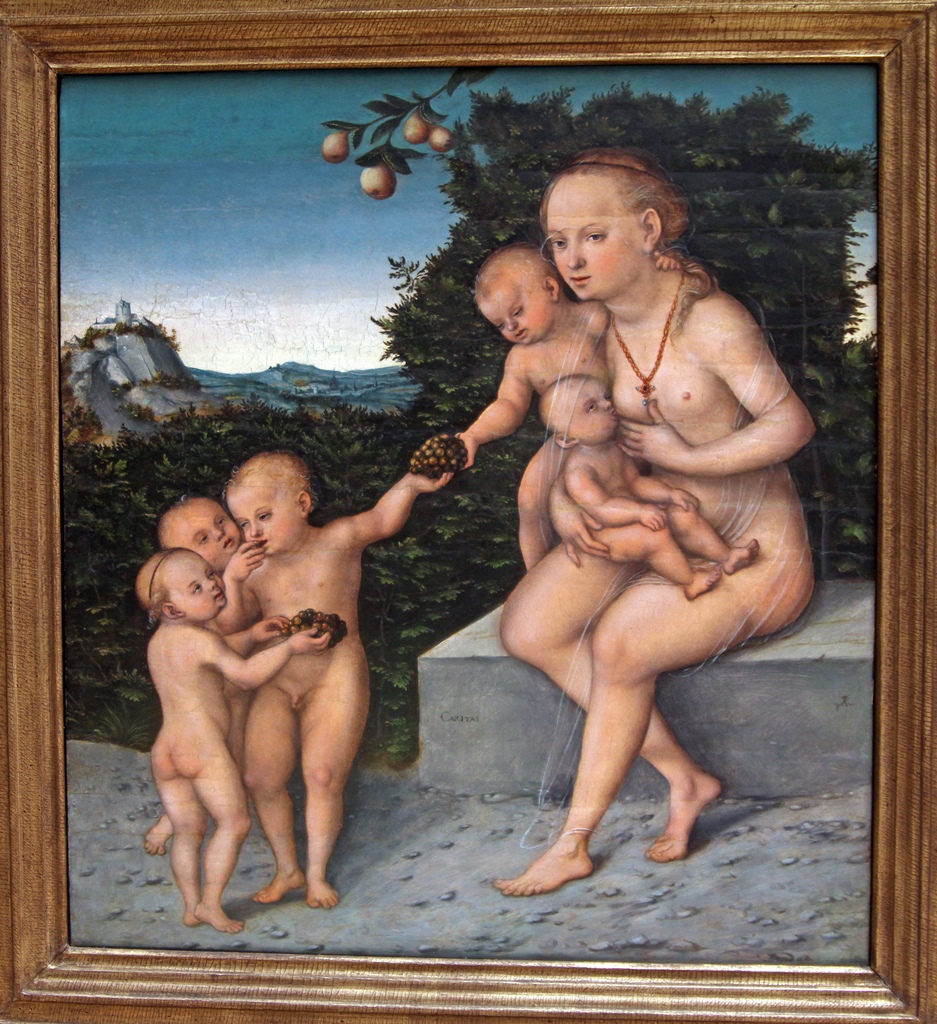
Charity, Lucas Cranach the Younger (16th C.)
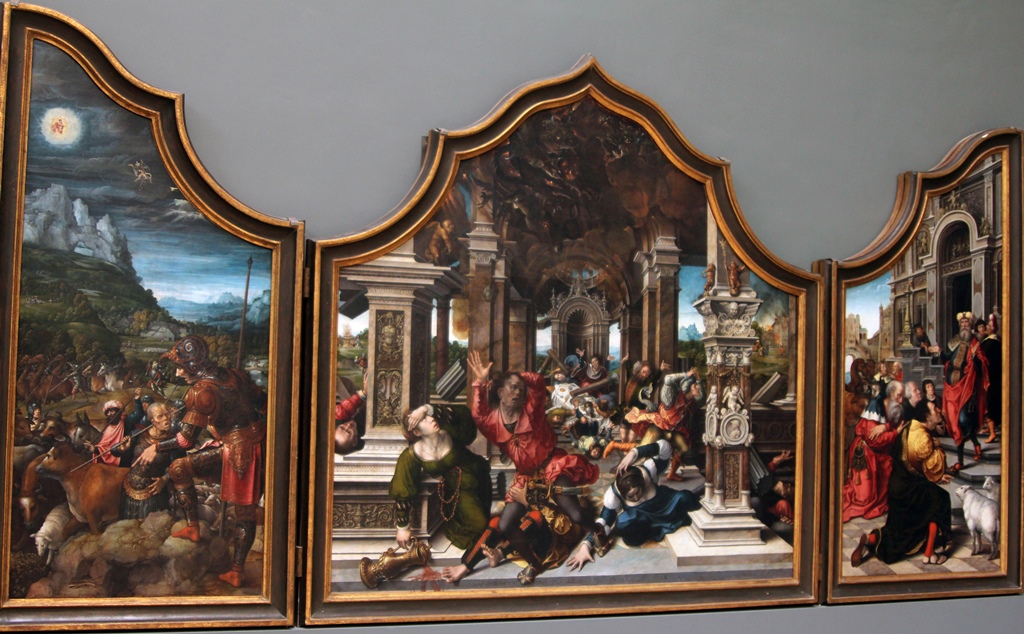
Triptych of the Virtue of Patience, Bernard van Orley (1521)
Artists eventually came to present-day reality for their subjects, depicting scenes
from the lives of common people and from nature. The younger and elder Brueghels
could produce canvases so crowded with figures that they looked like early "Where’s
Waldo?" pictures.
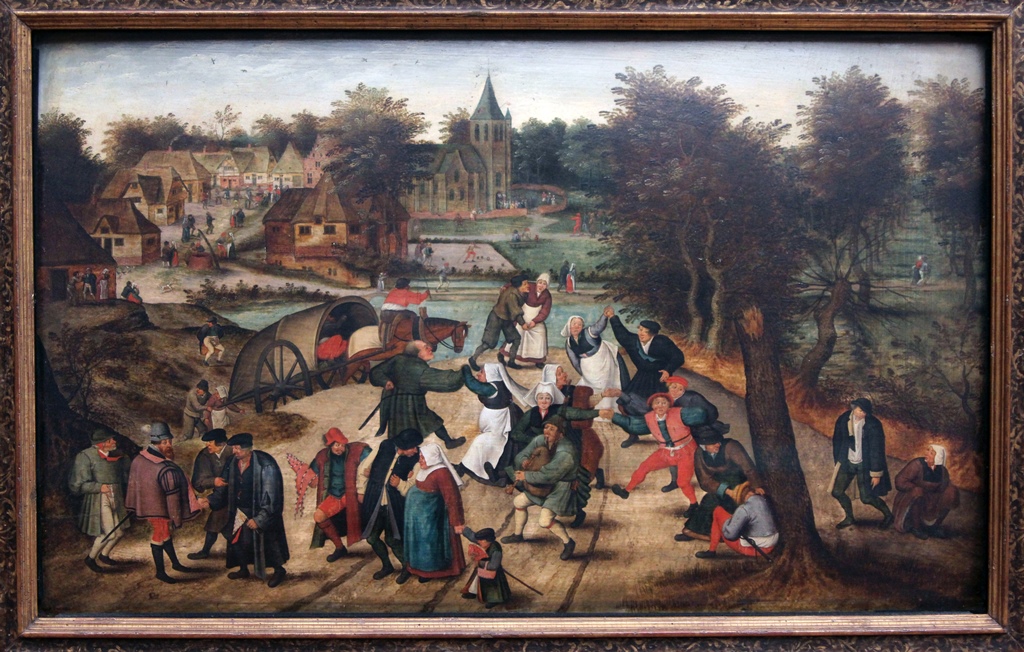
The Return of the Pilgrimage, Pieter Bruegel II
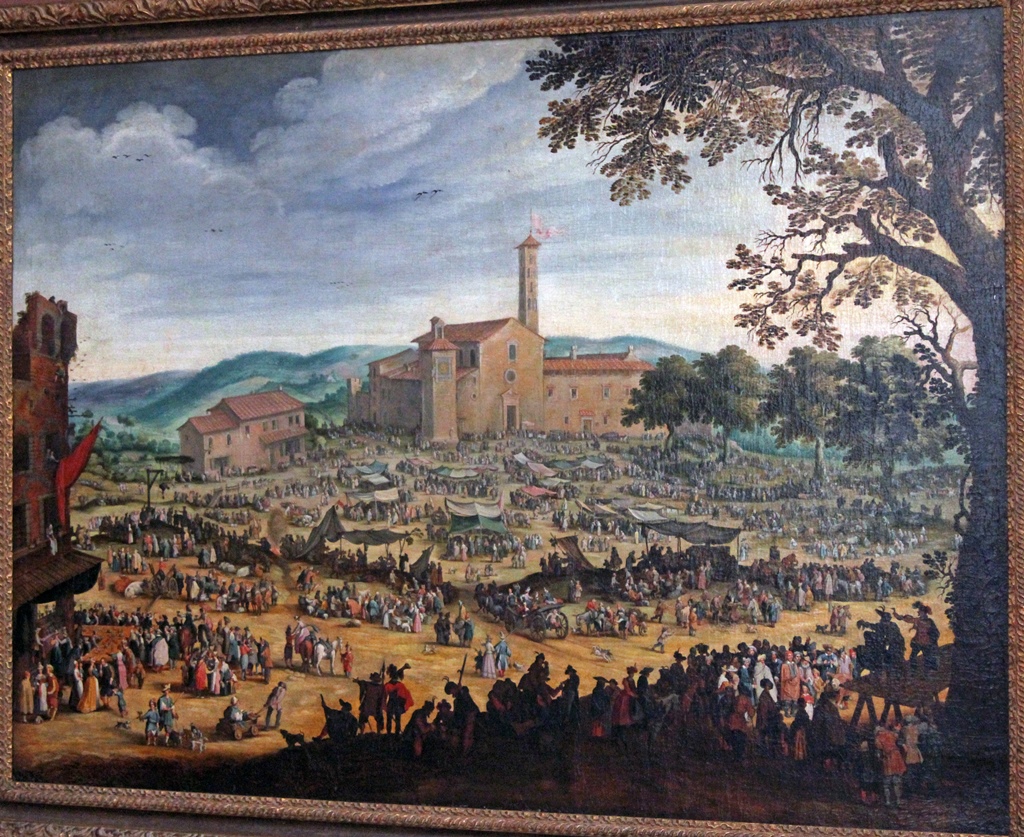
The Fair of Impruneta, after Jacques Callot
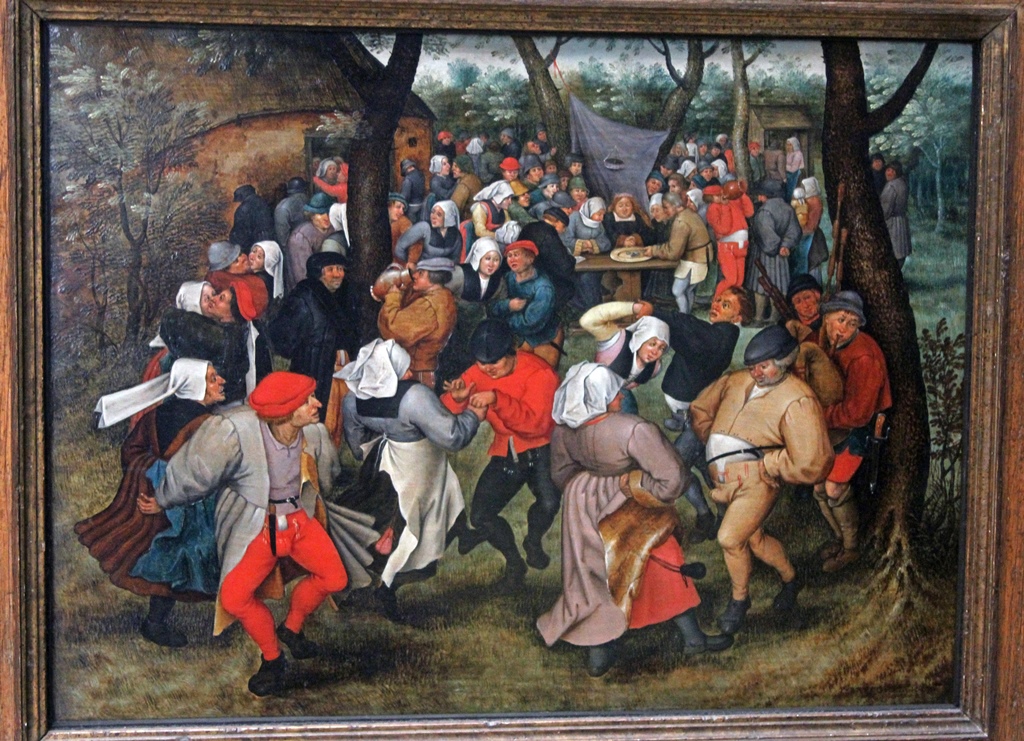
Wedding Dance in the Open Air, Pieter Brueghel the Younger (1607)
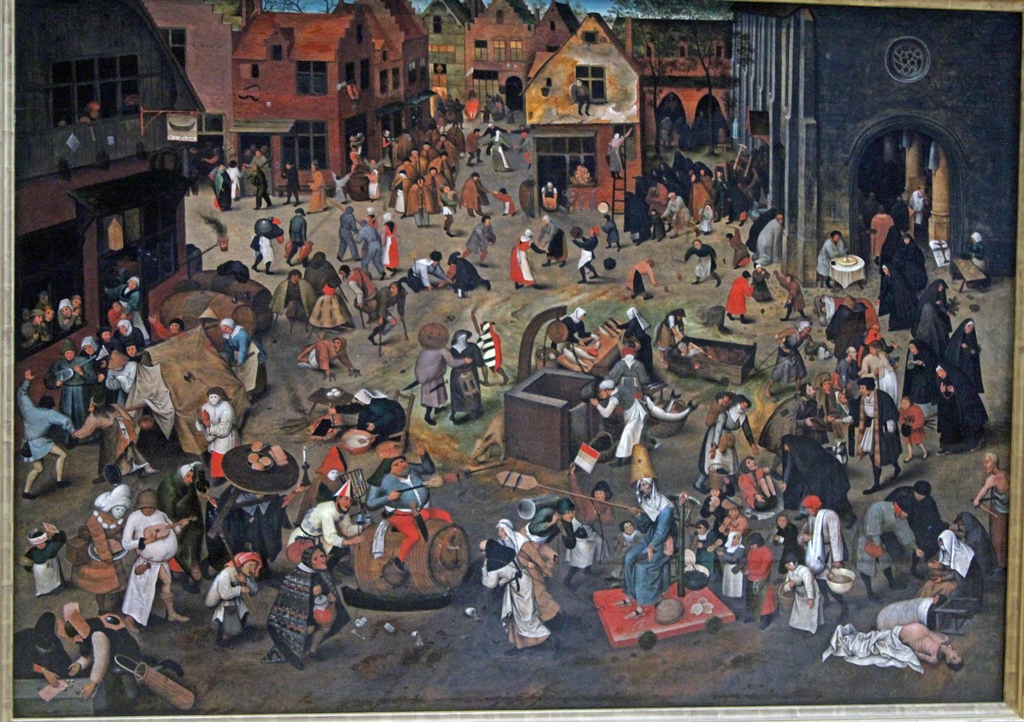
The Battle of Carnival and Lent, Pieter Brueghel the Younger
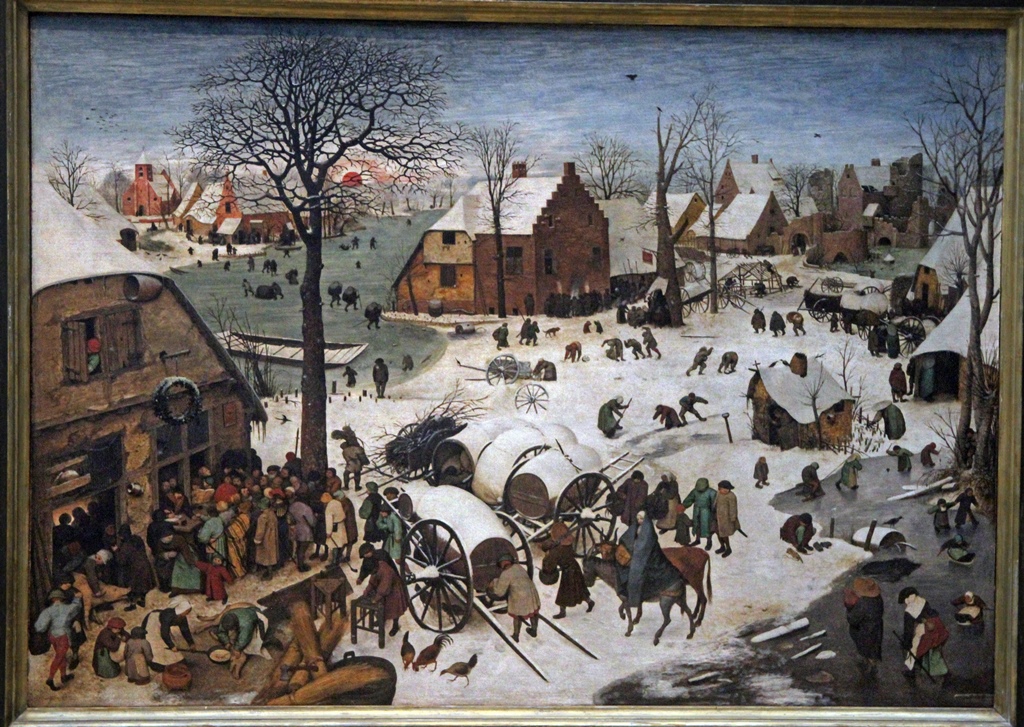
The Census at Bethlehem, Pieter Brueghel the Elder (1566)
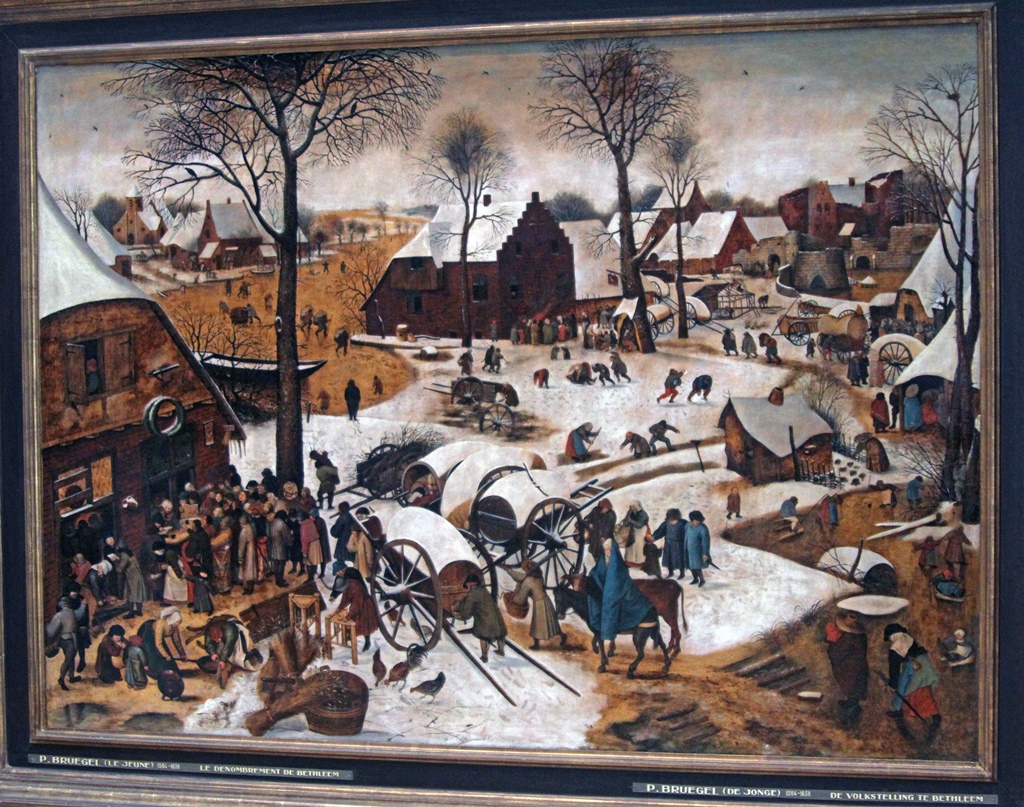
The Census at Bethlehem, Pieter Brueghel the Younger (1610)
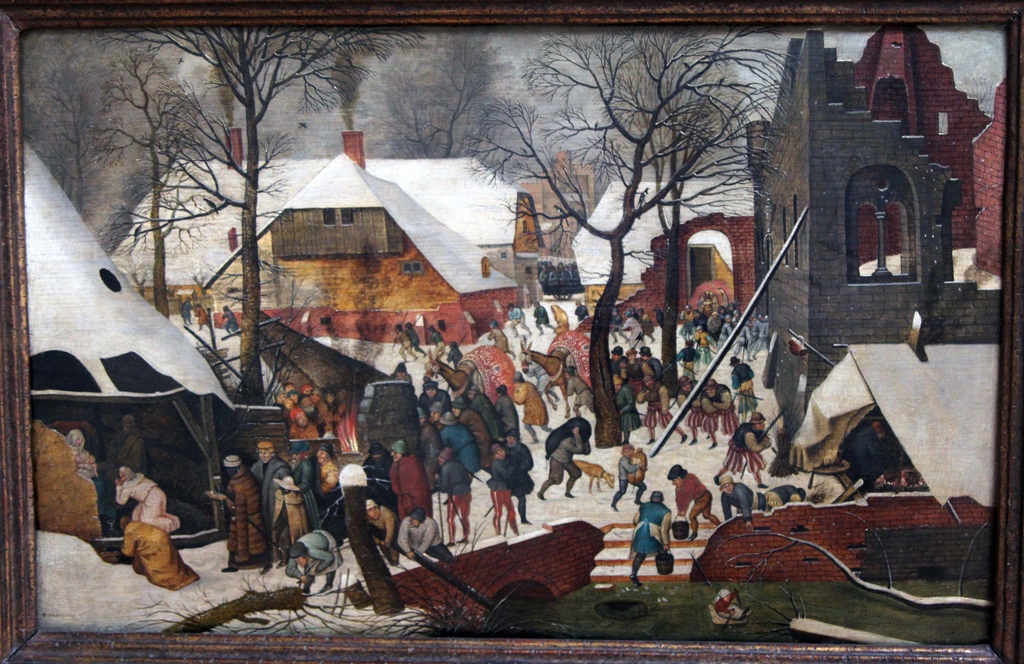
The Adoration of the Magi in the Snow, Pieter Brueghel the Younger
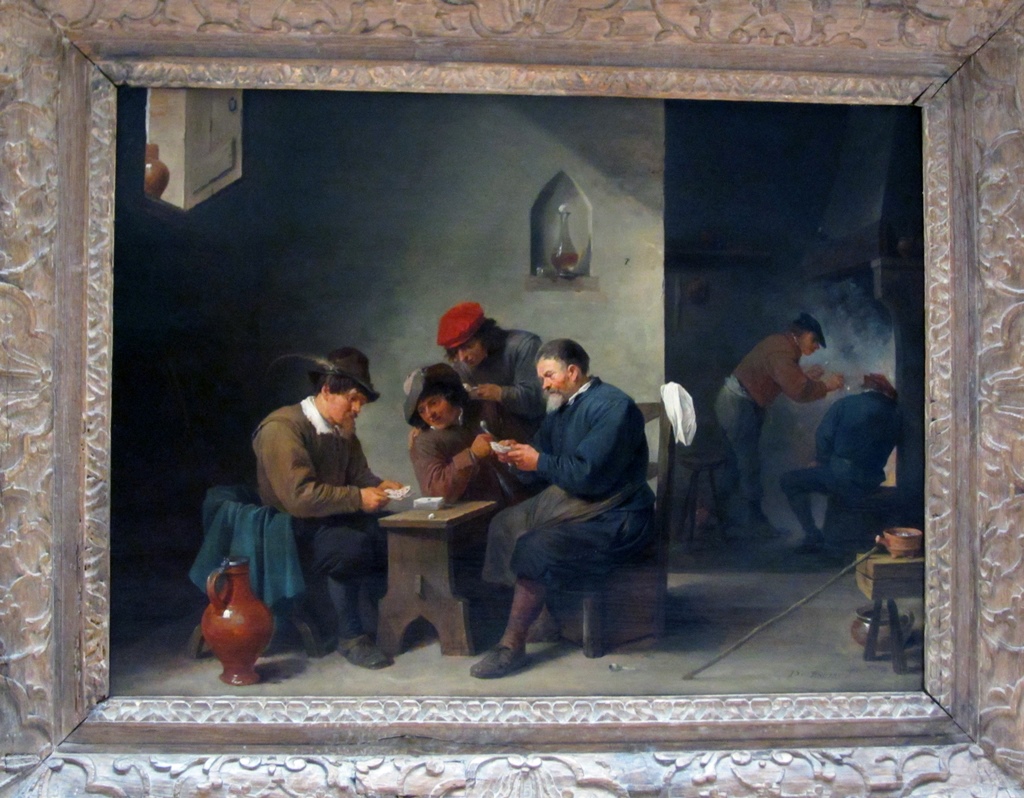
Card Players in a Tavern, David Teniers II (ca. 1644-45)
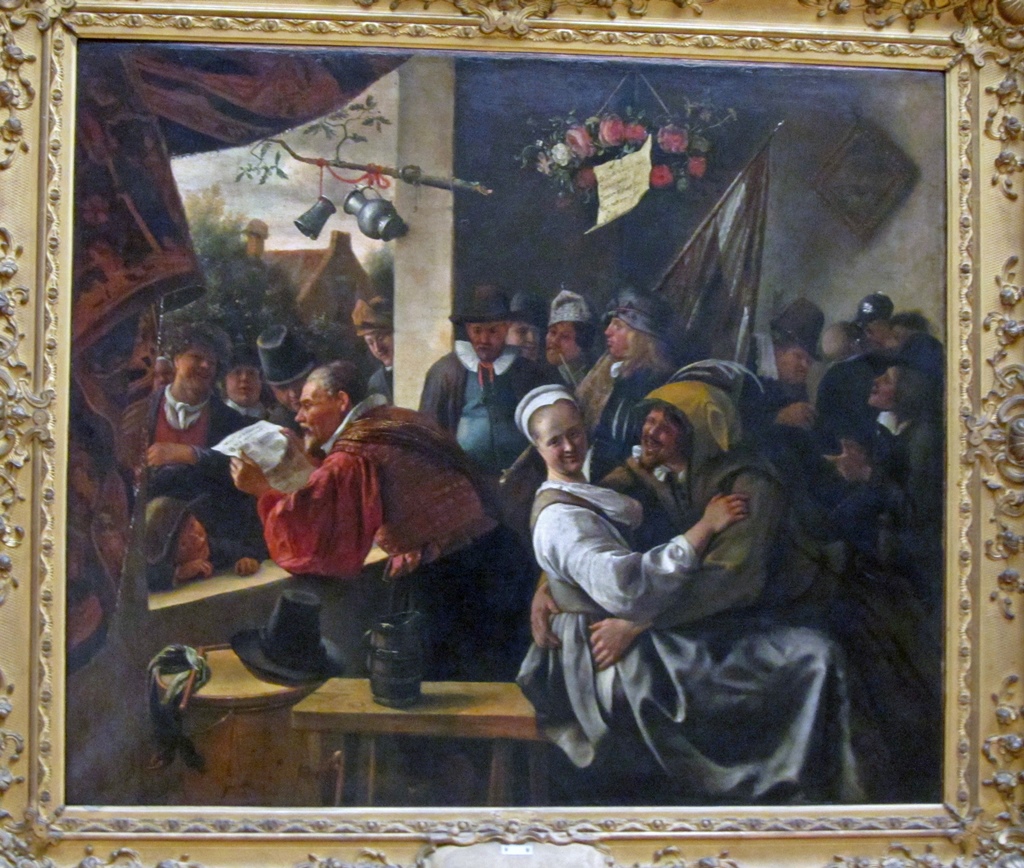
The Rhetoricians "In Love Free", Jan Steen
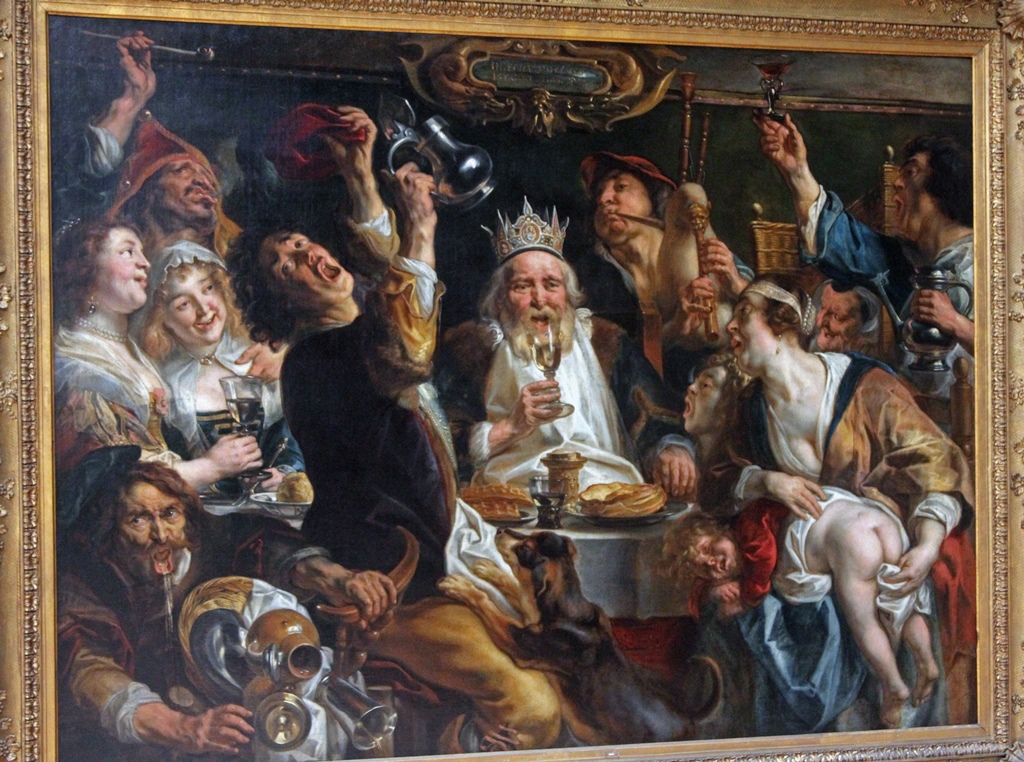
The King Drinking, Jacob Jordaens (17th C.)
Bob and Panels of the Justice of the Emperor Otto, Dirk Bouts (15th C.)
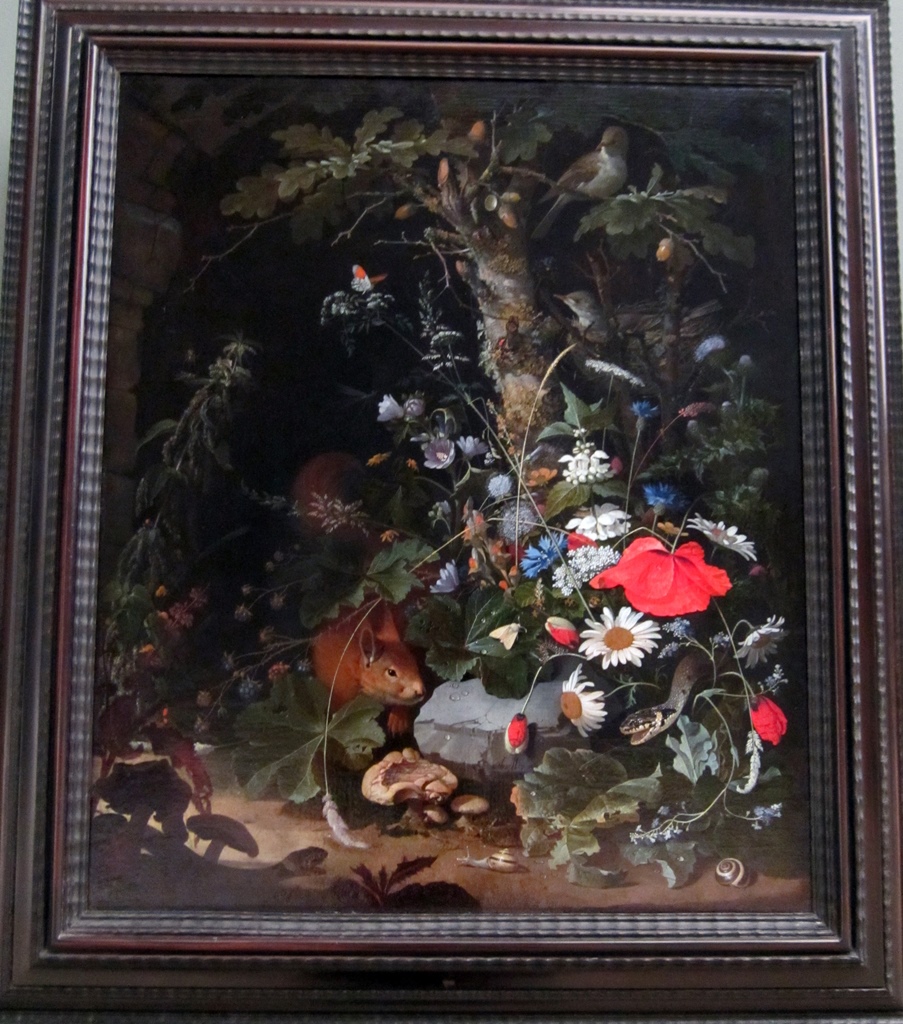
Undergrowth with Flowers, Animals and Insects, Abraham Mignon
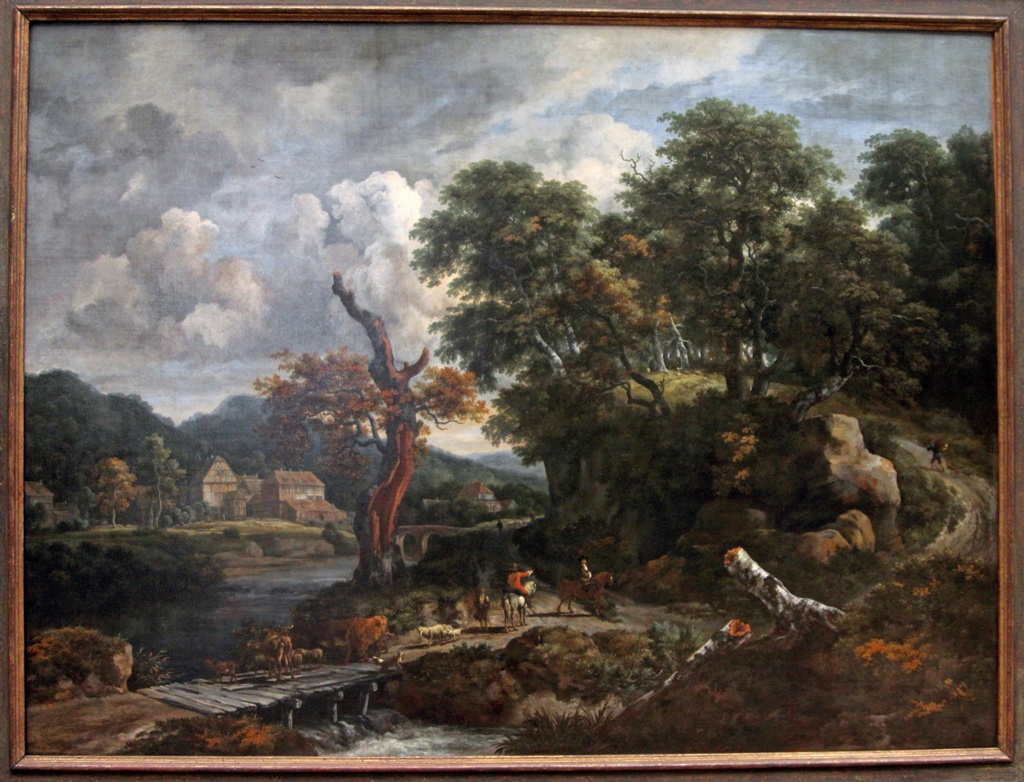
Landscape with River, Jacob van Ruisdael and Adriaen van de Velde
After the Reformation, in Protestant areas artists didn’t have the
decoration-minded Catholic church to rely on for business, so they ended
up painting many portraits of members of the upper and middle classes. Many
of these portraits were near-photographic in their accuracy.
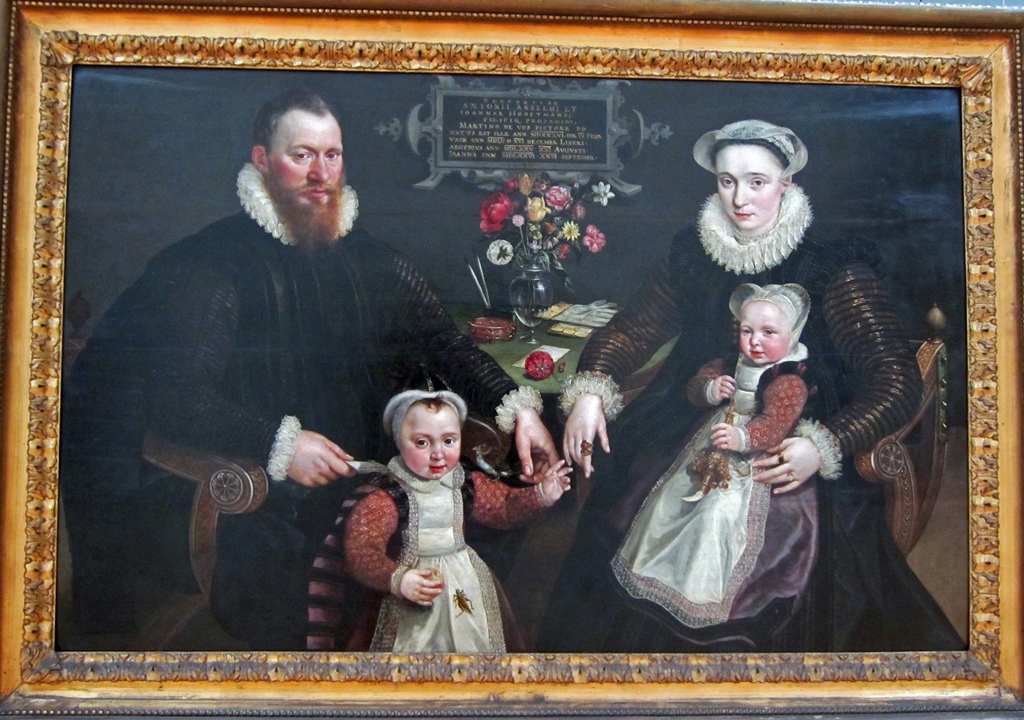
Portrait of Antonio Anselmo, His Wife and Children, Marten de Vos (1577)
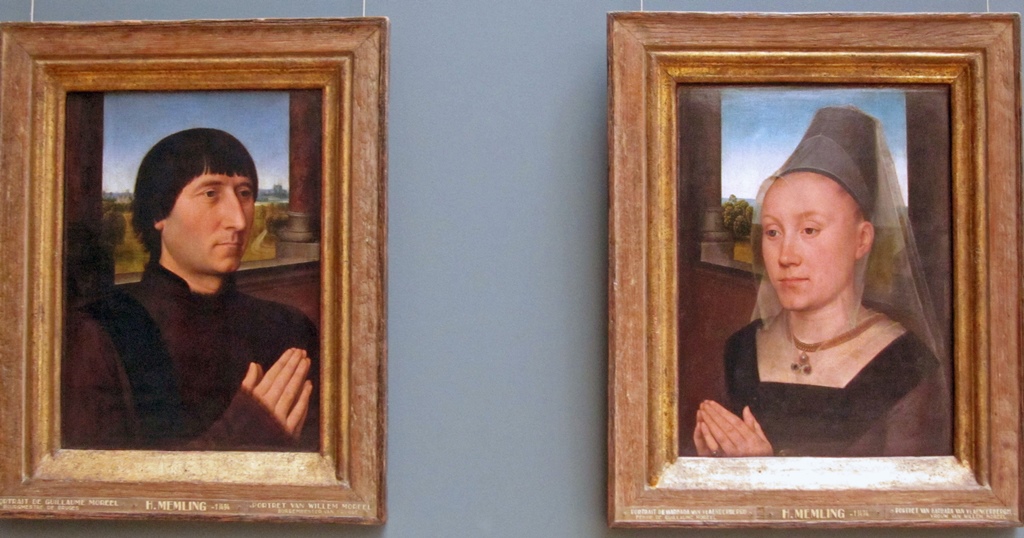
Portraits of Willem Moreel and His Wife, Hans Memling (15th C.)
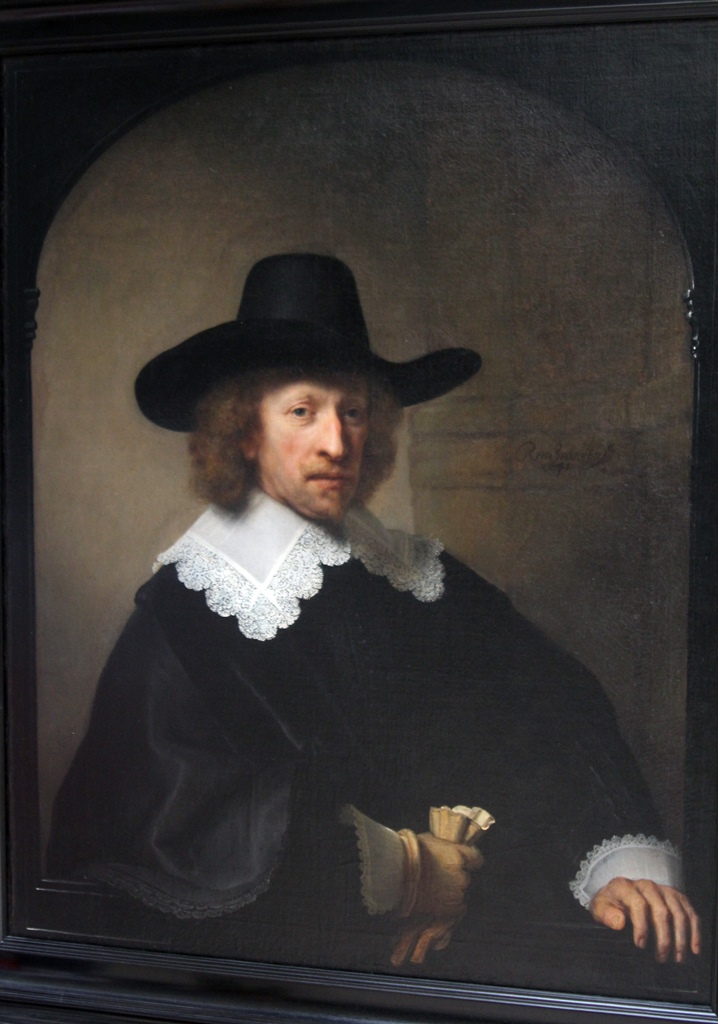
Portrait of Nicolaes van Bambeeck, Rembrandt van Rijn (1641)
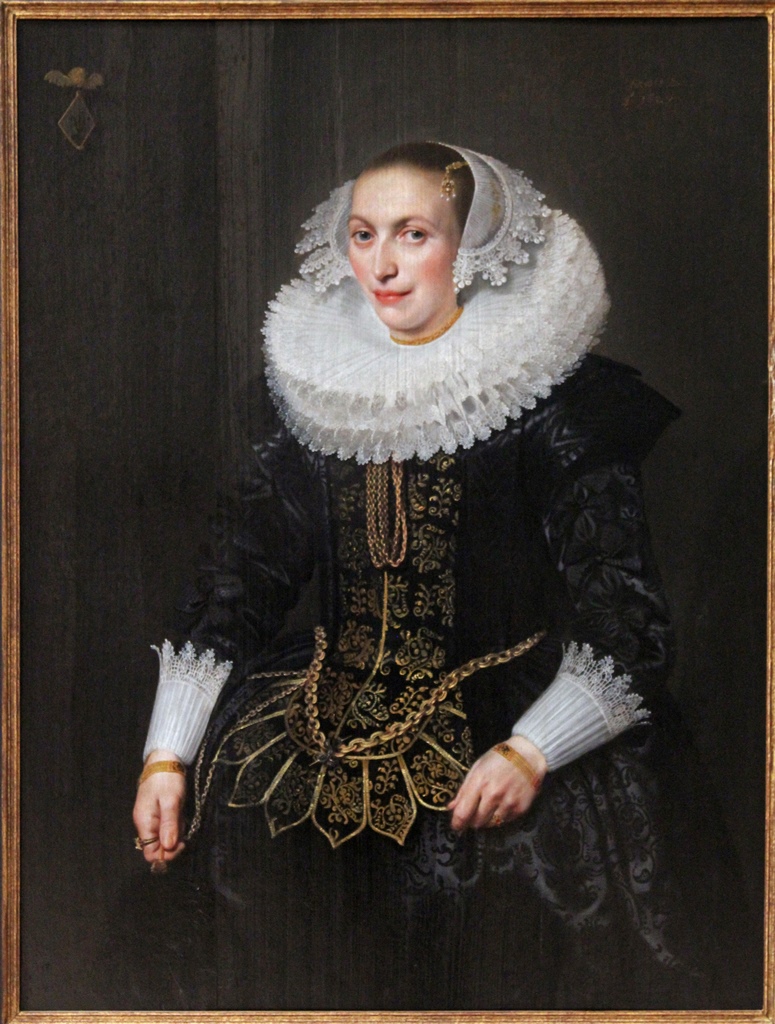
Portrait of Johanna van Heyst, Michiel van Mierevelt (1627)
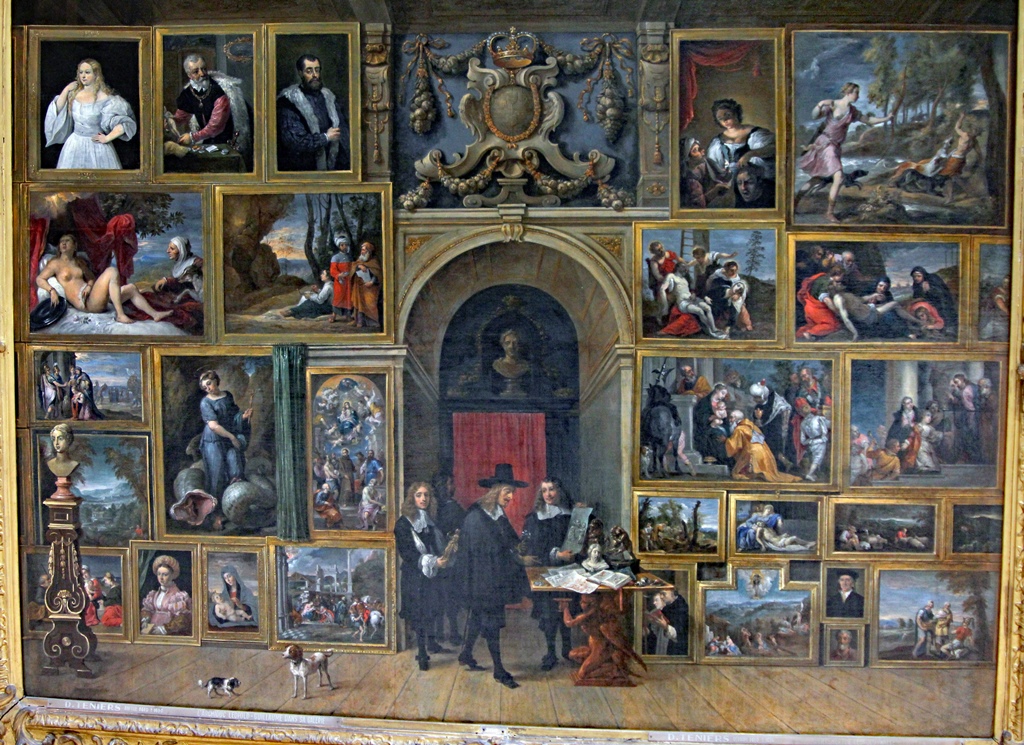
Archduke Leopold William in his Gallery of Italian Paintings, David Teniers II (1651)
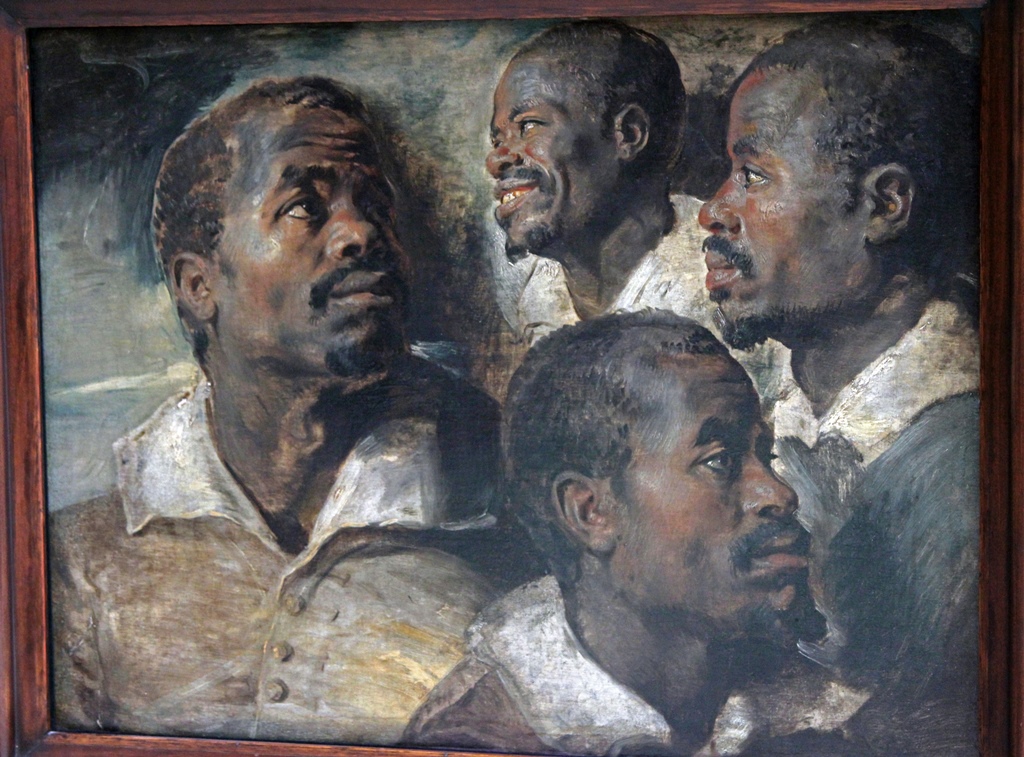
Four Studies of the Head of a Moor, Peter Paul Rubens
John Willett, Magistrate, Michael Rysbrack (1763)
Late in the 18th Century the American and French Revolutions brought profound
challenges to the unquestioning obedience to royalty that had existed for
centuries. Artists started to depict historical scenes reflecting these changes,
eventually moving on into the Romantic area. But this is where the collection of
the Oldmasters Museum came to an end.
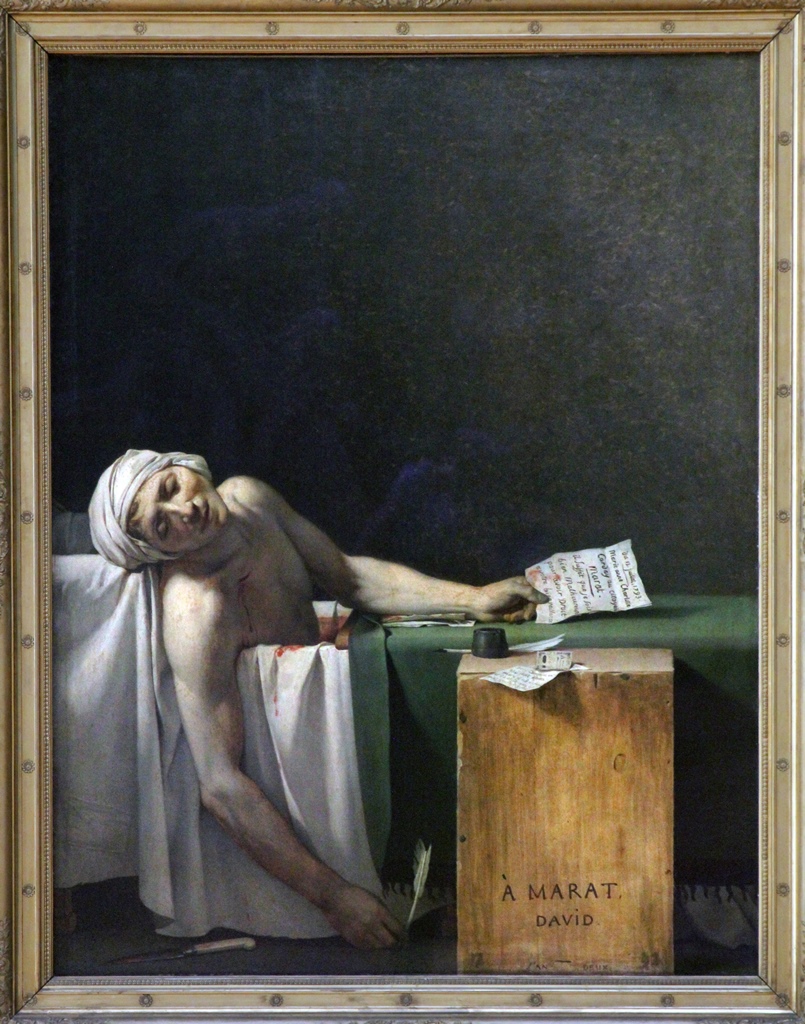
The Assassination of Marat, Jacques-Louis David (1793)
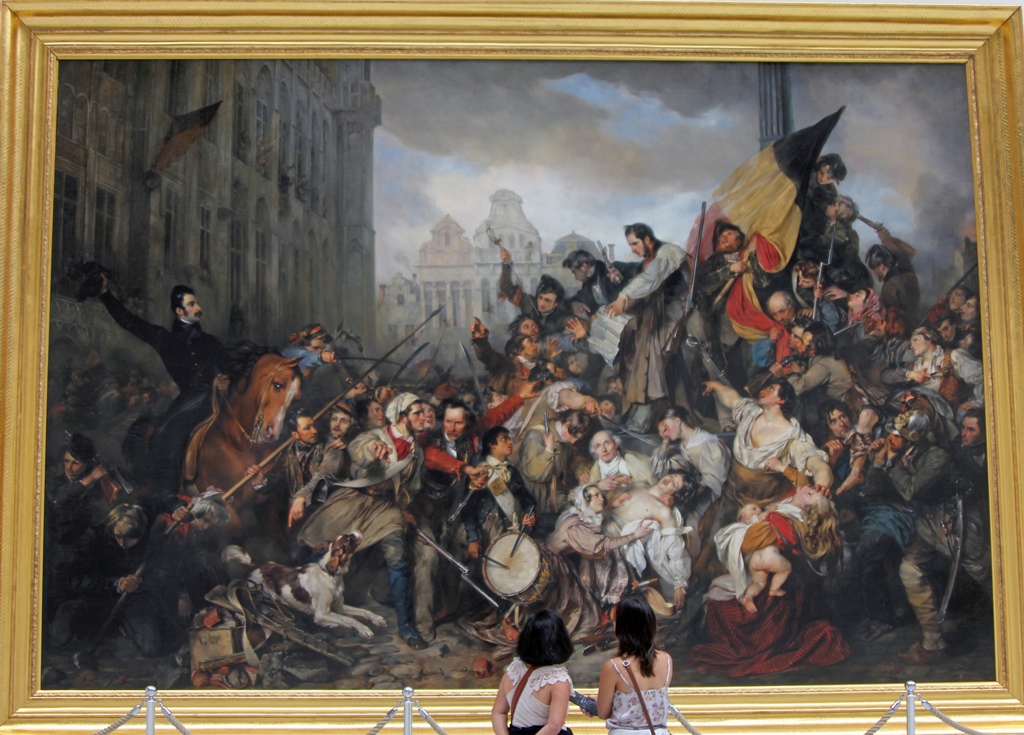
Episode of the September Days 1830, Gustaf Wappers (1835)
We moved on ourselves, returning back down the hill to start packing up, as
this was our last evening in Brussels. We enjoyed a leisurely dinner,
reflecting on Brussels as a city for consumers (and not for dieters, as noted
in a previous page), and thought about some of the things we had most enjoyed
consuming. Which leads to our final Brussels page…

















